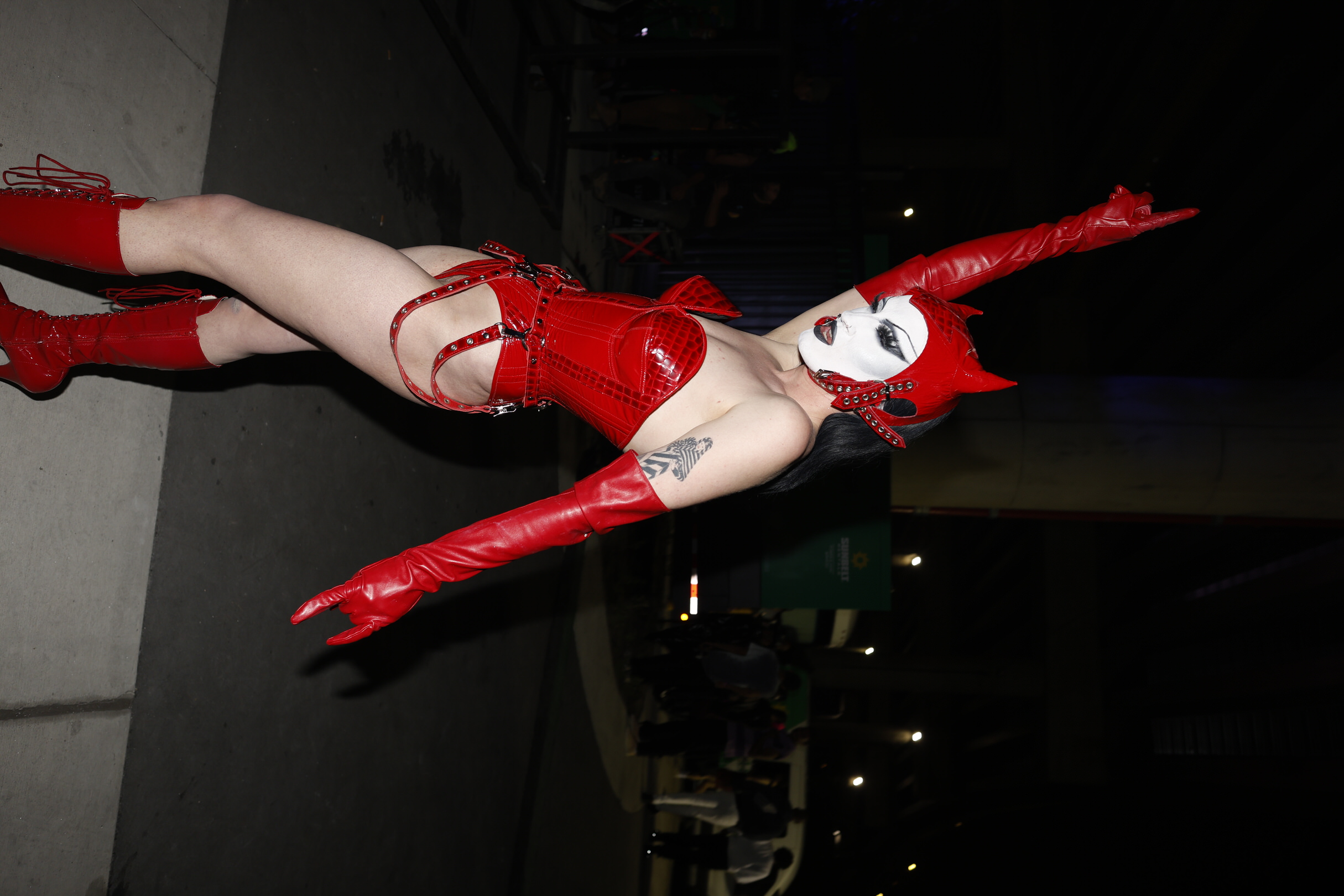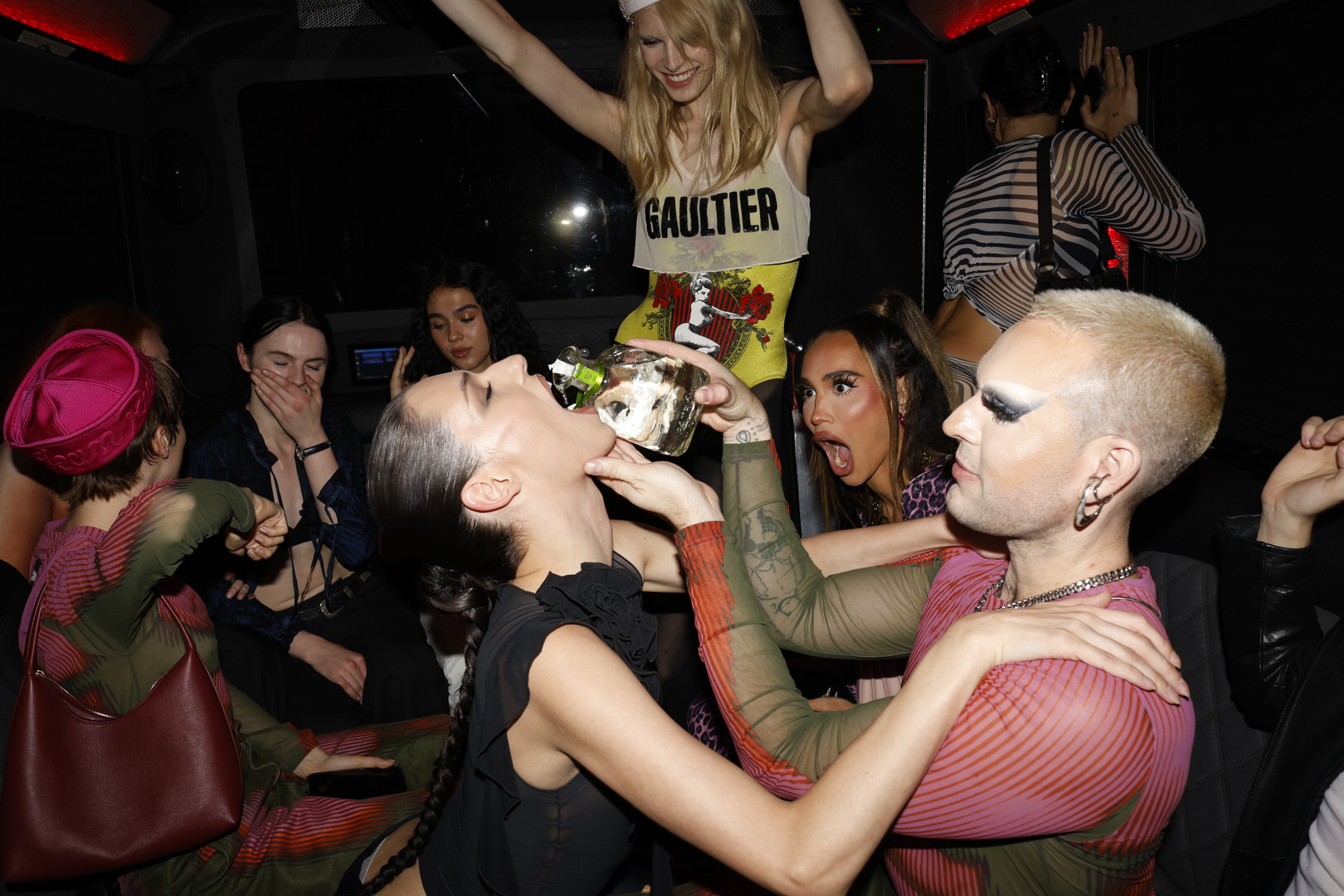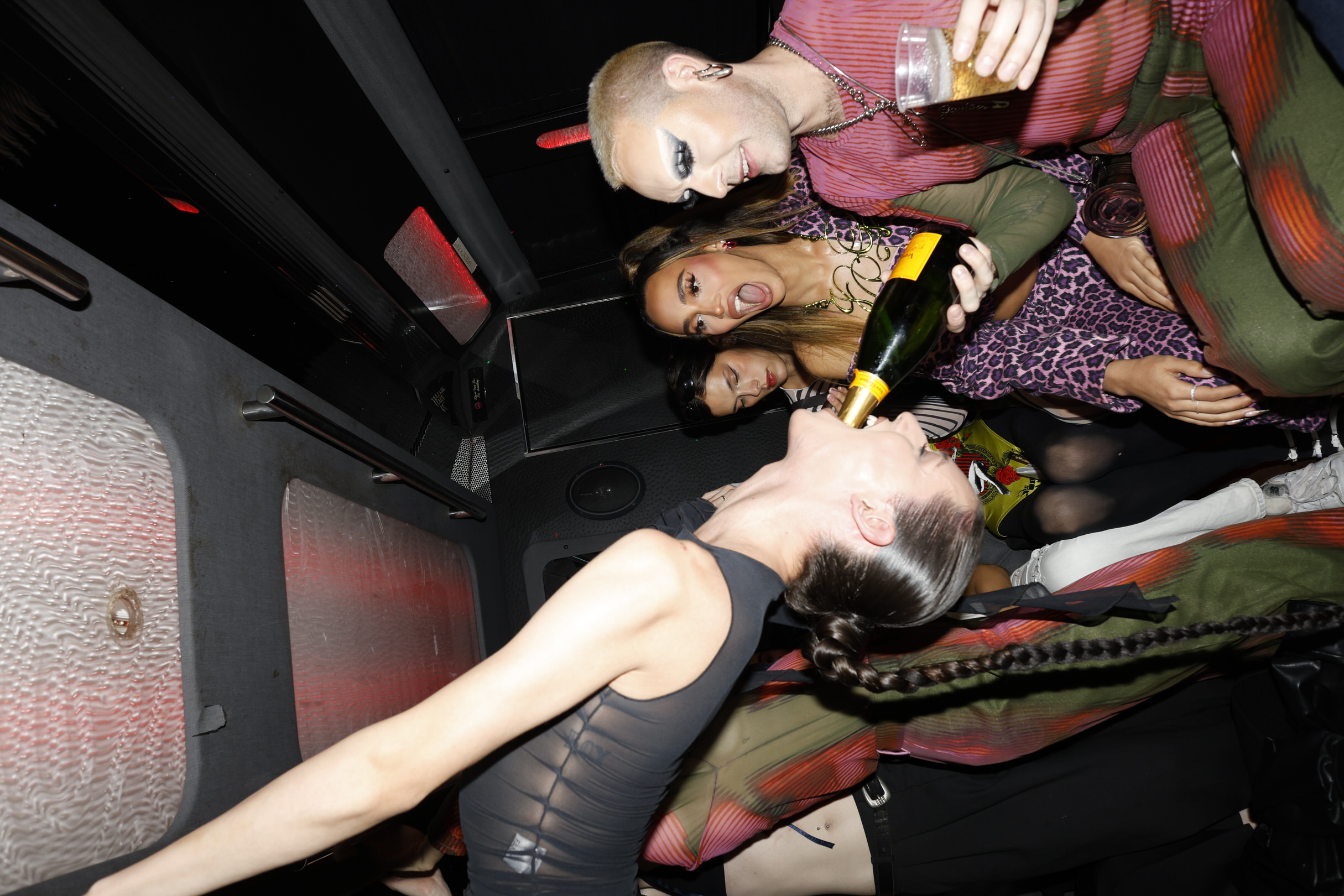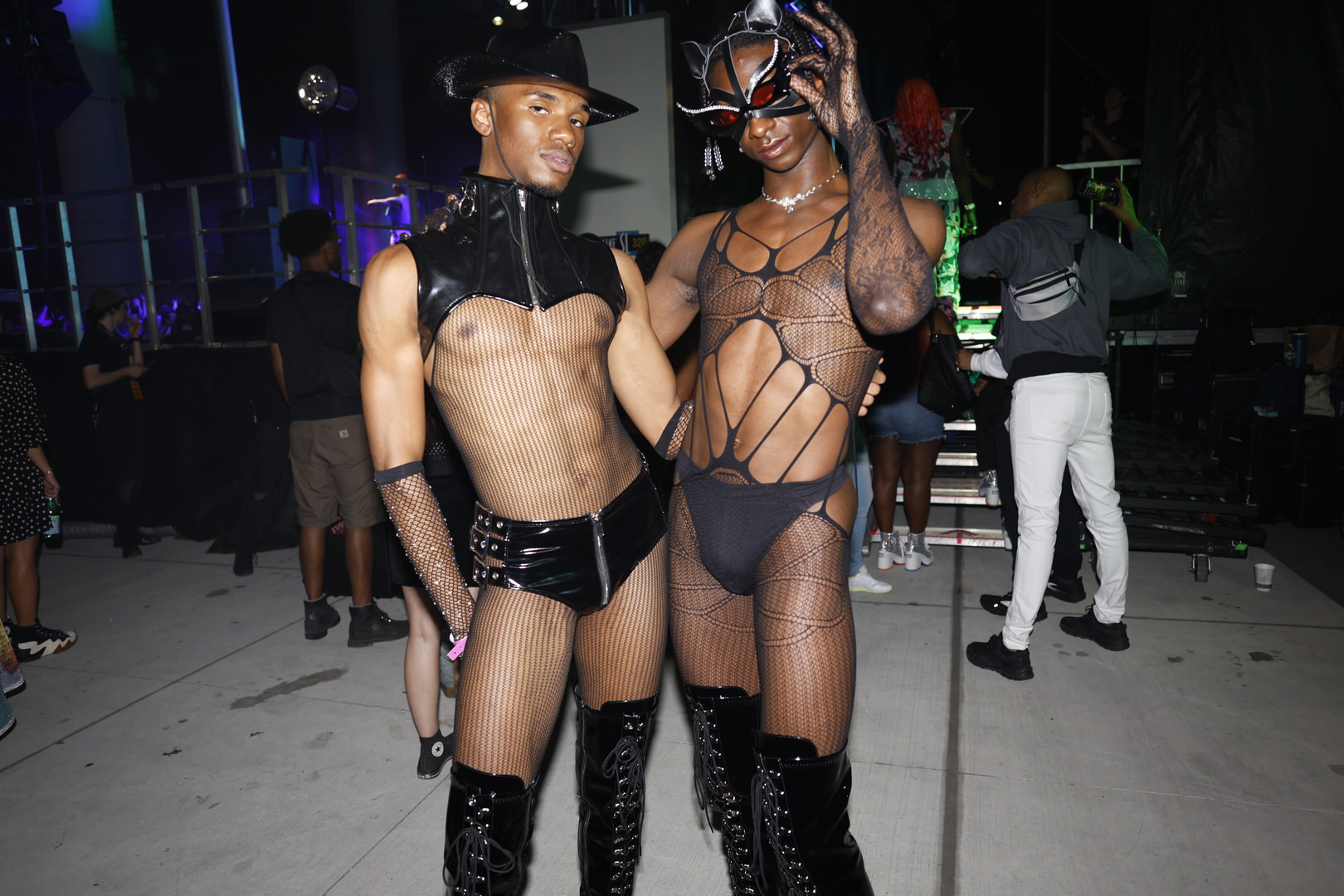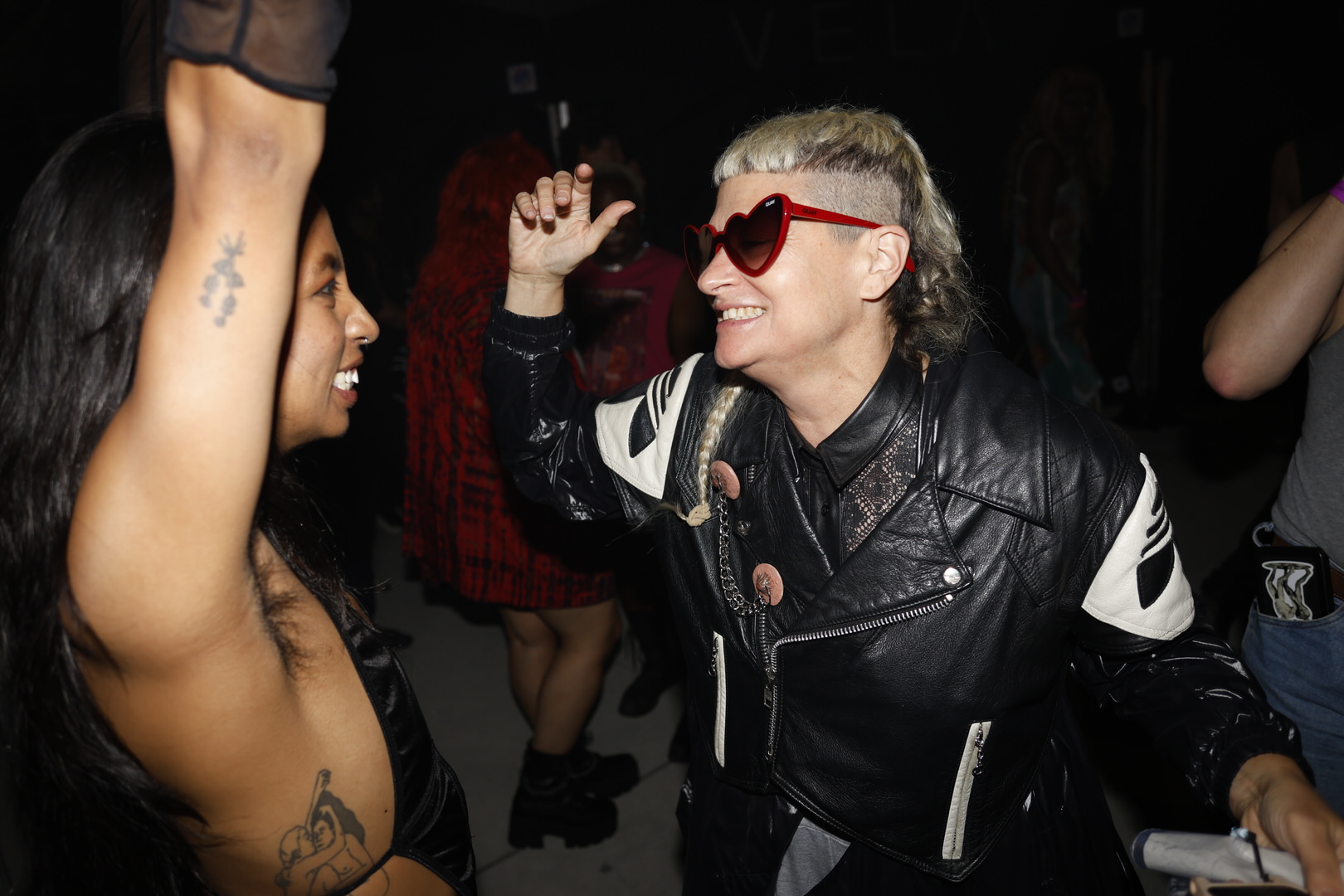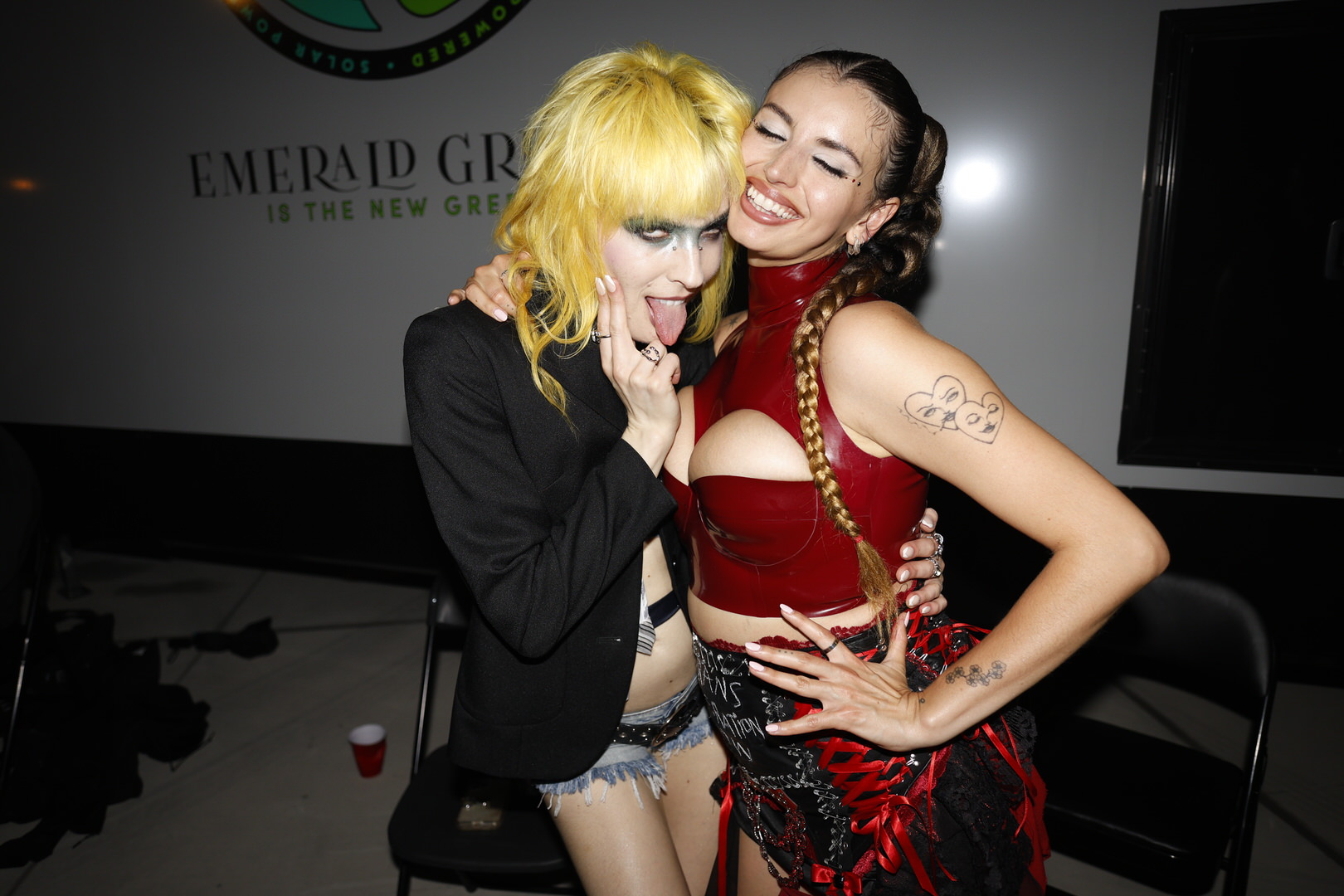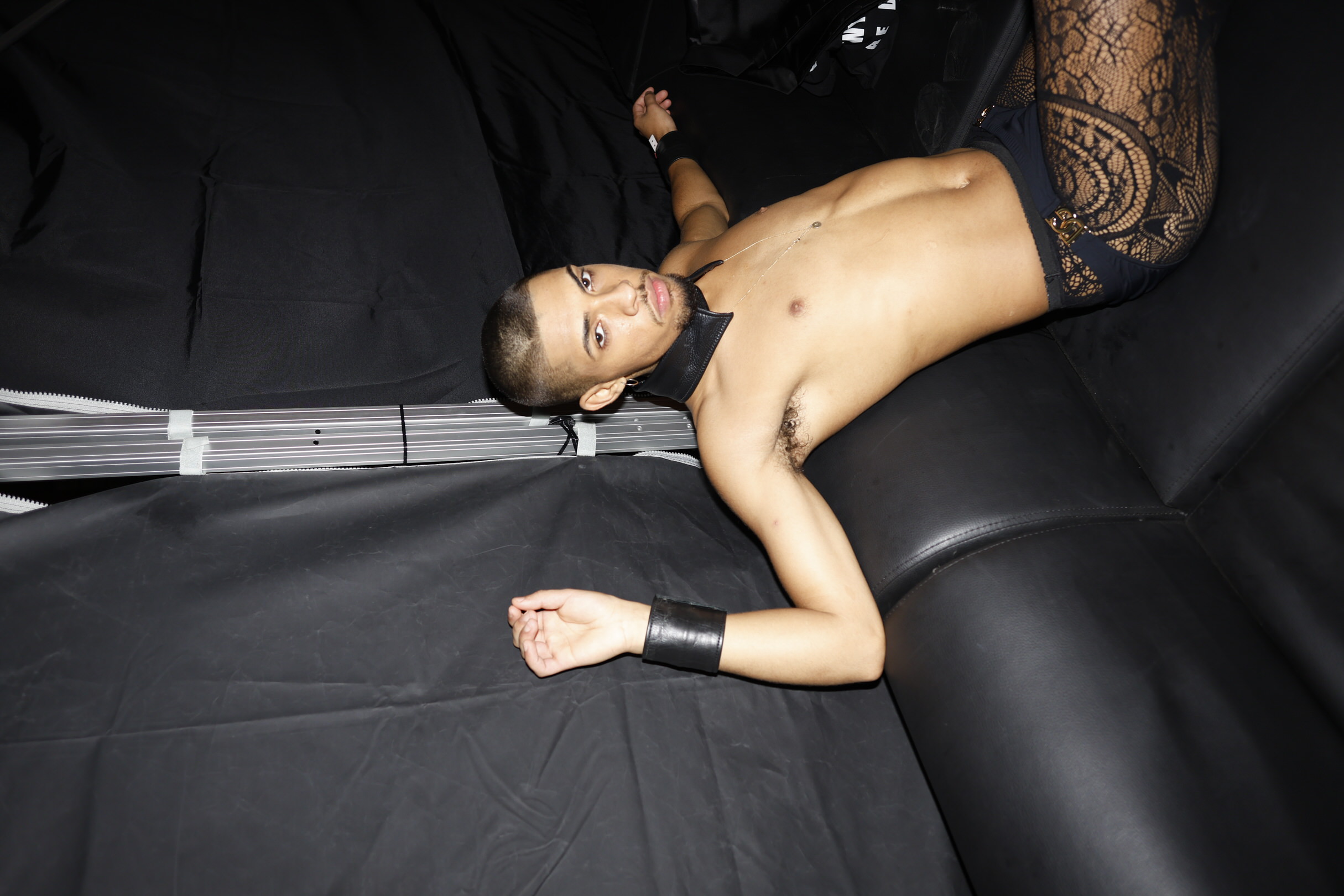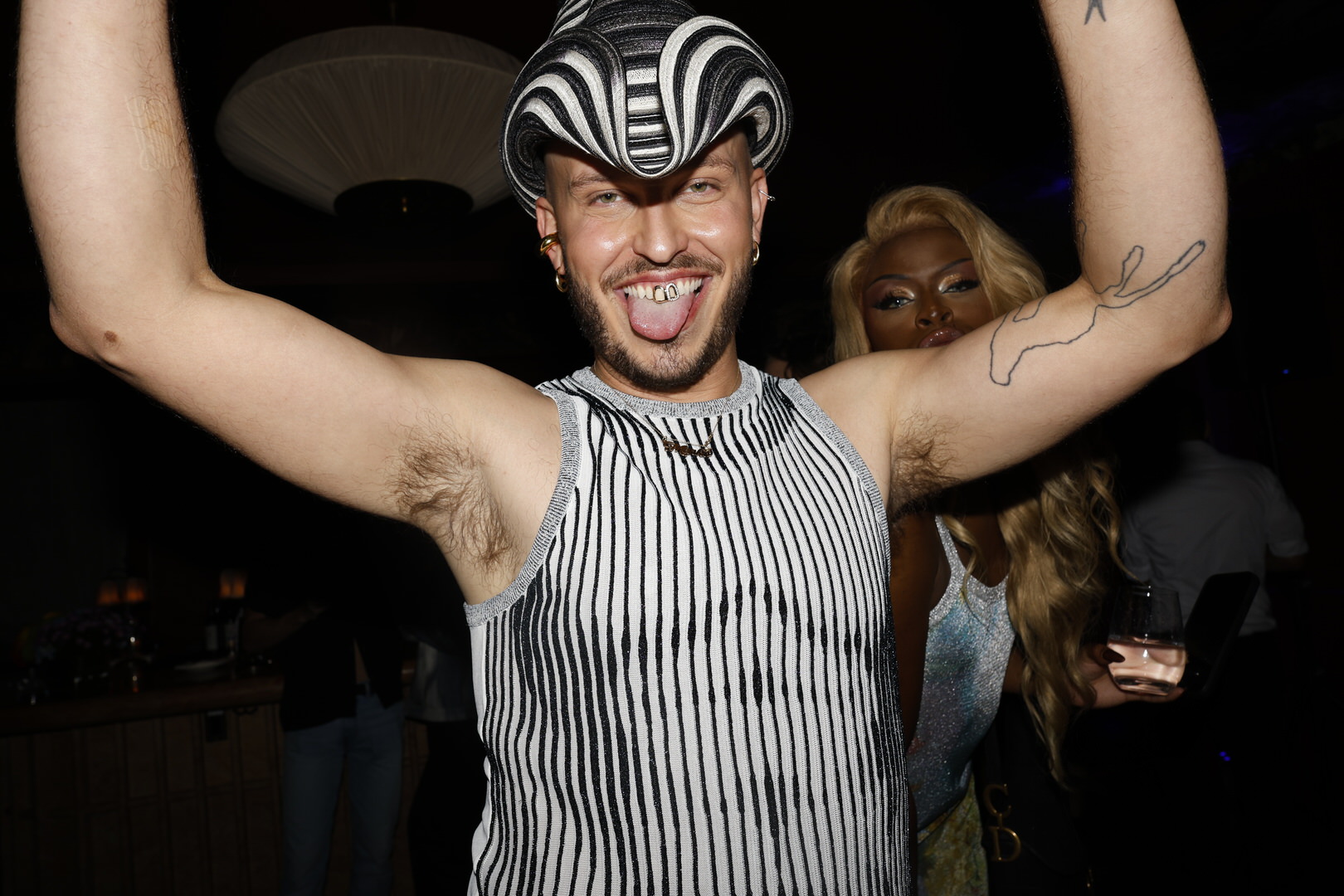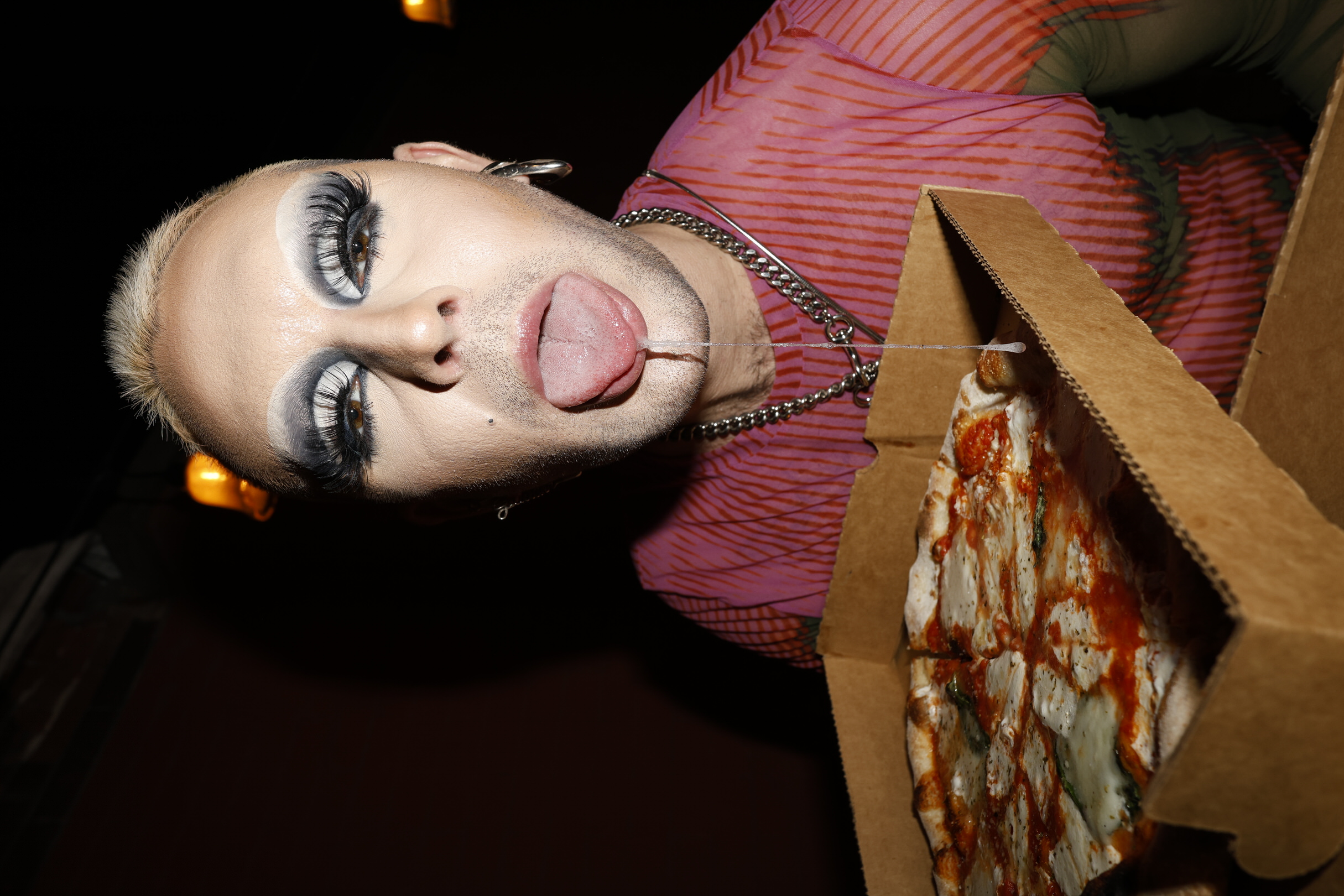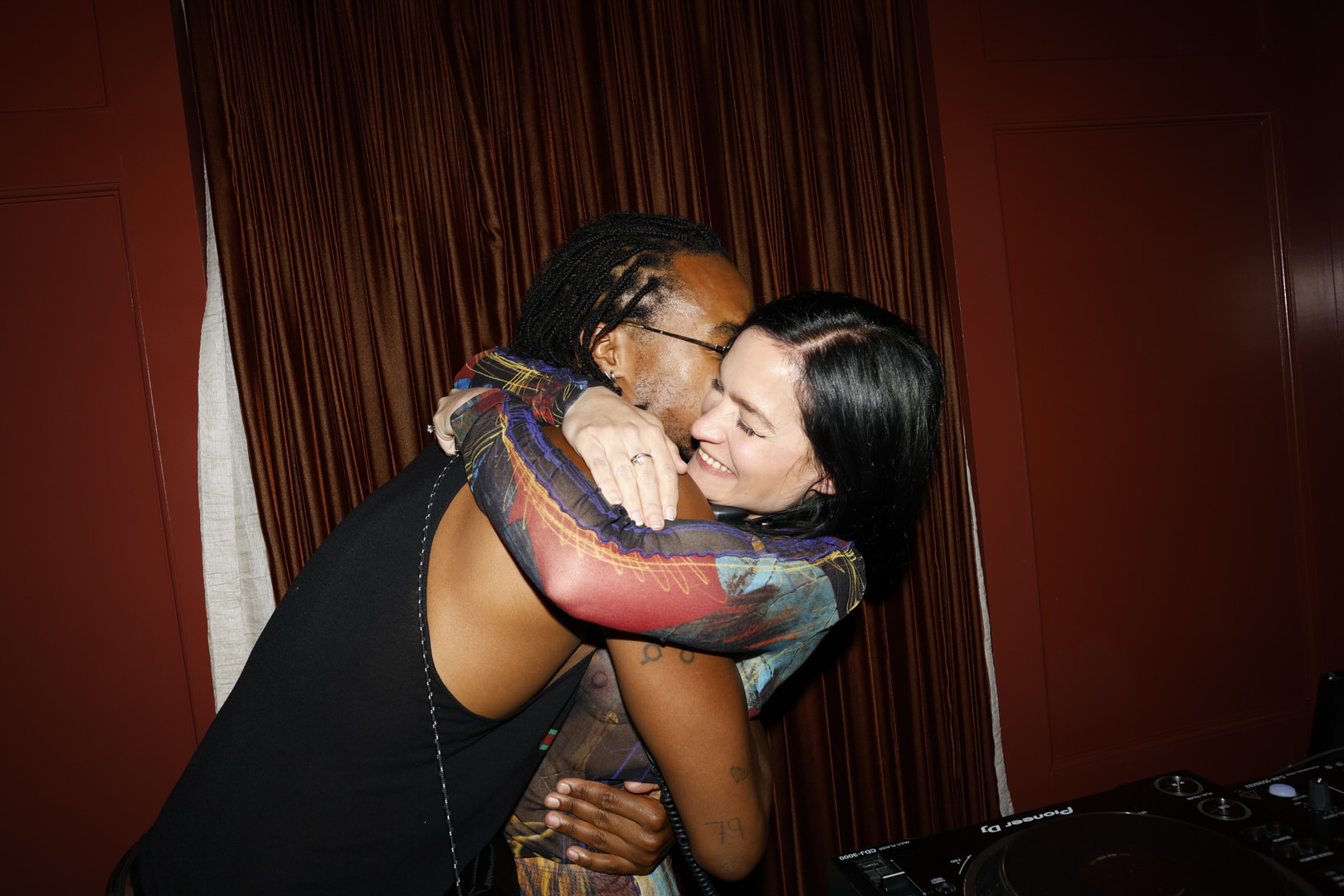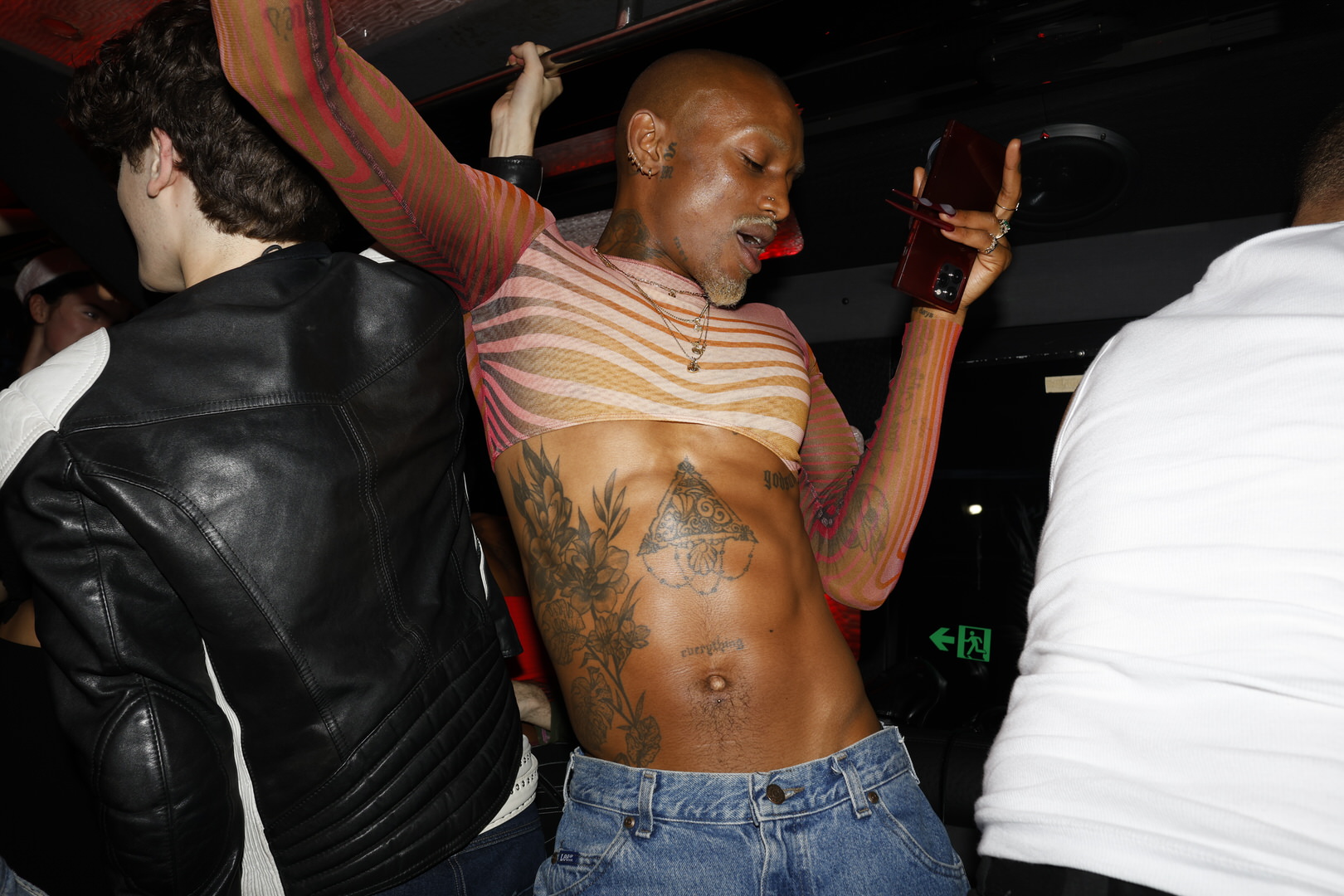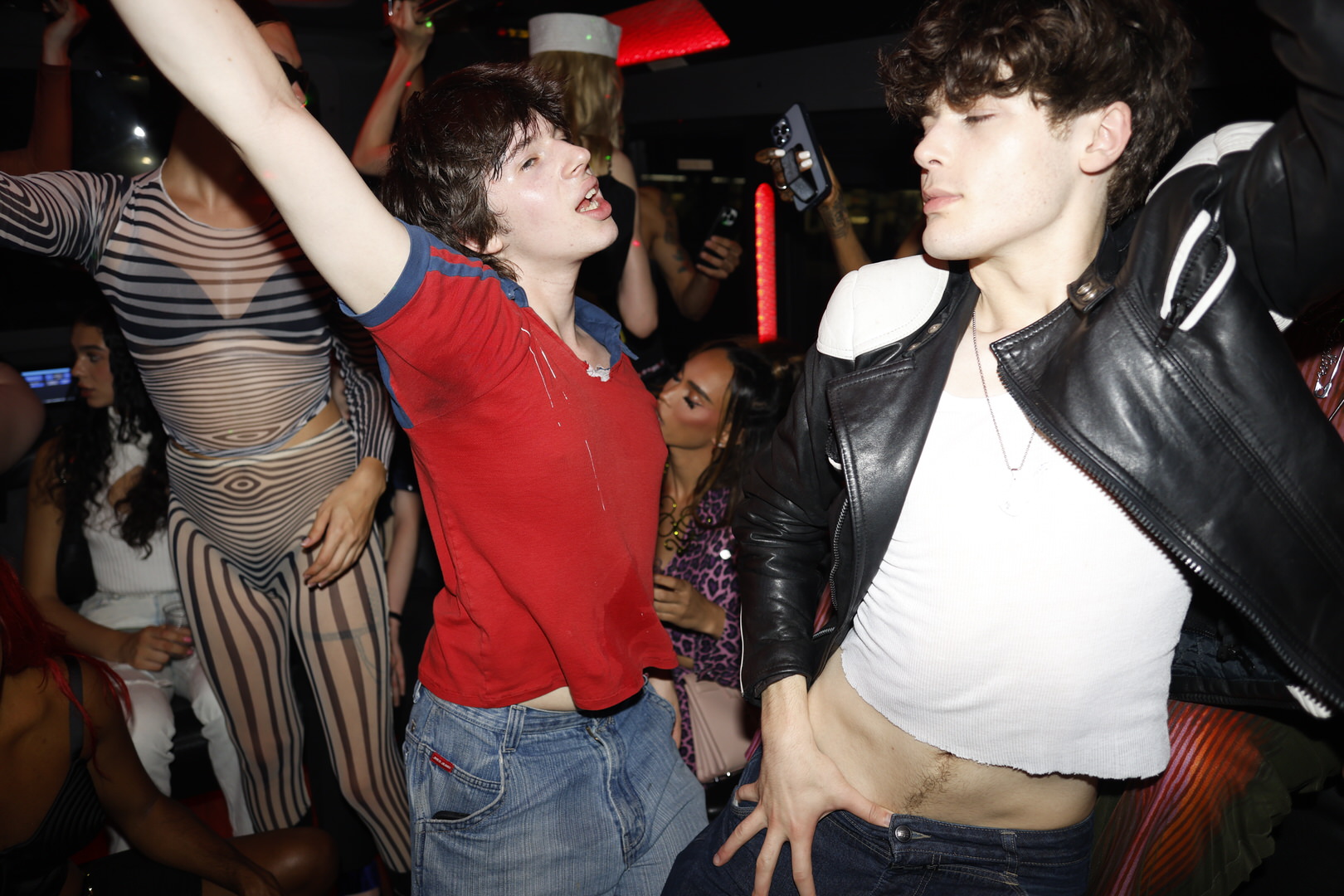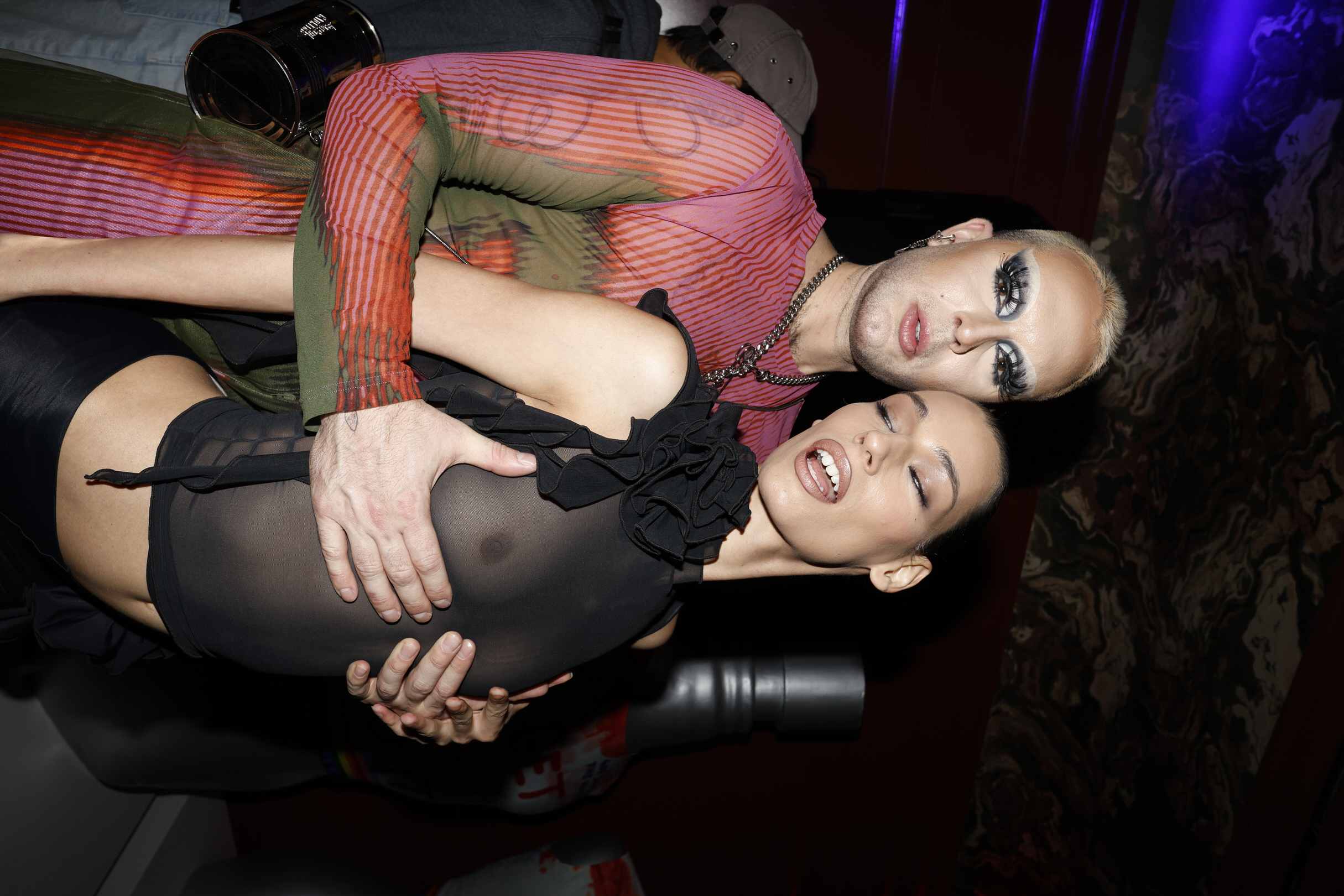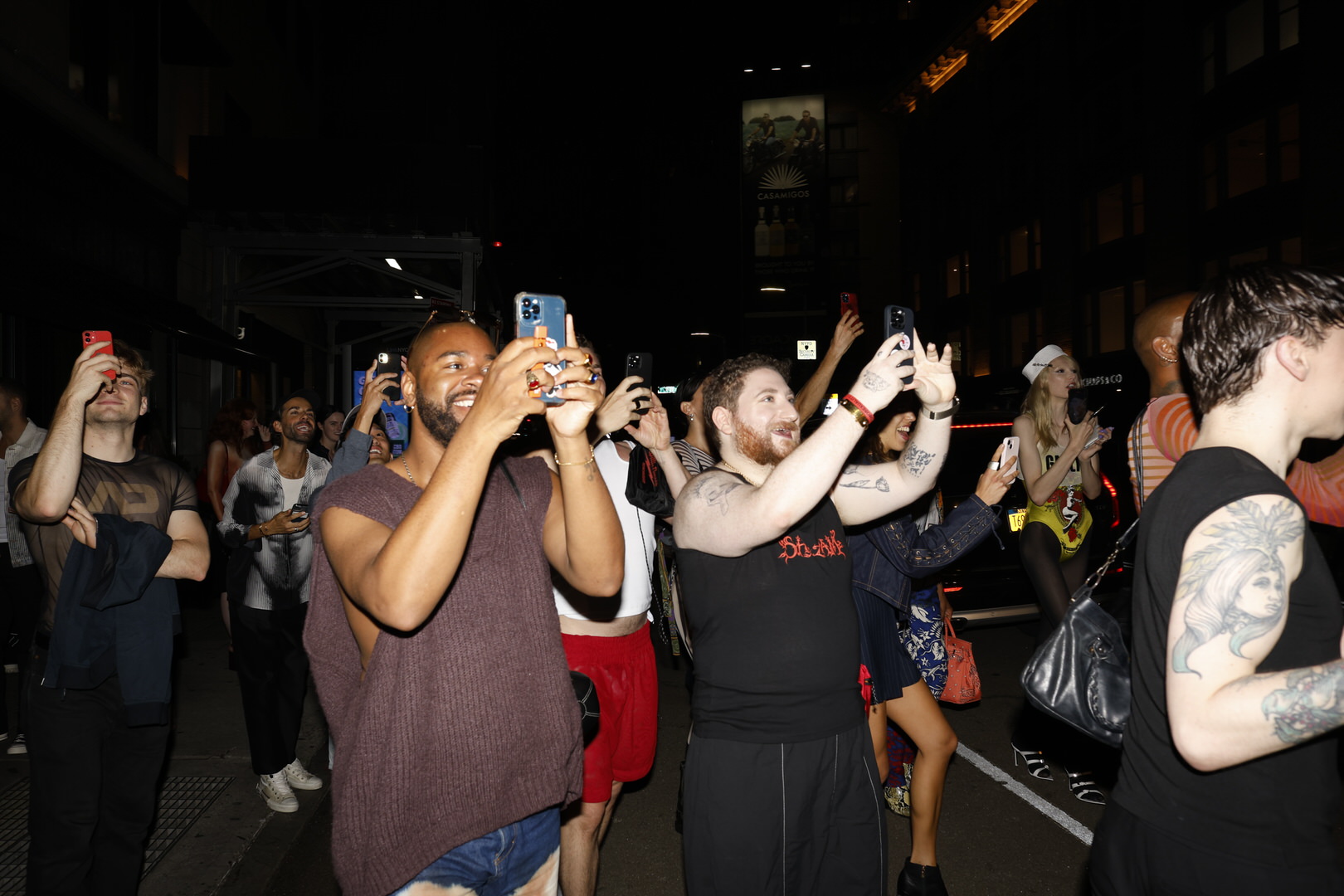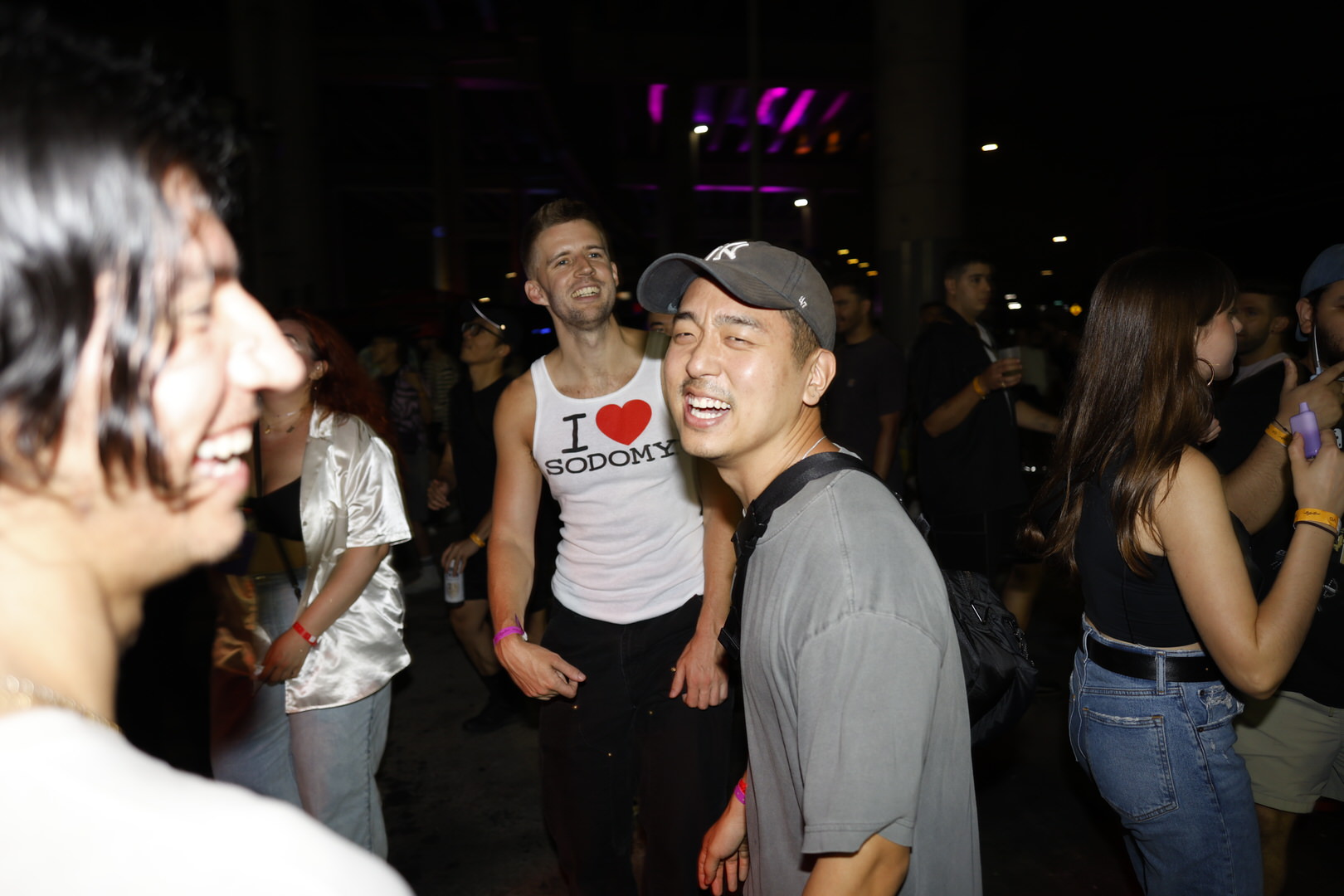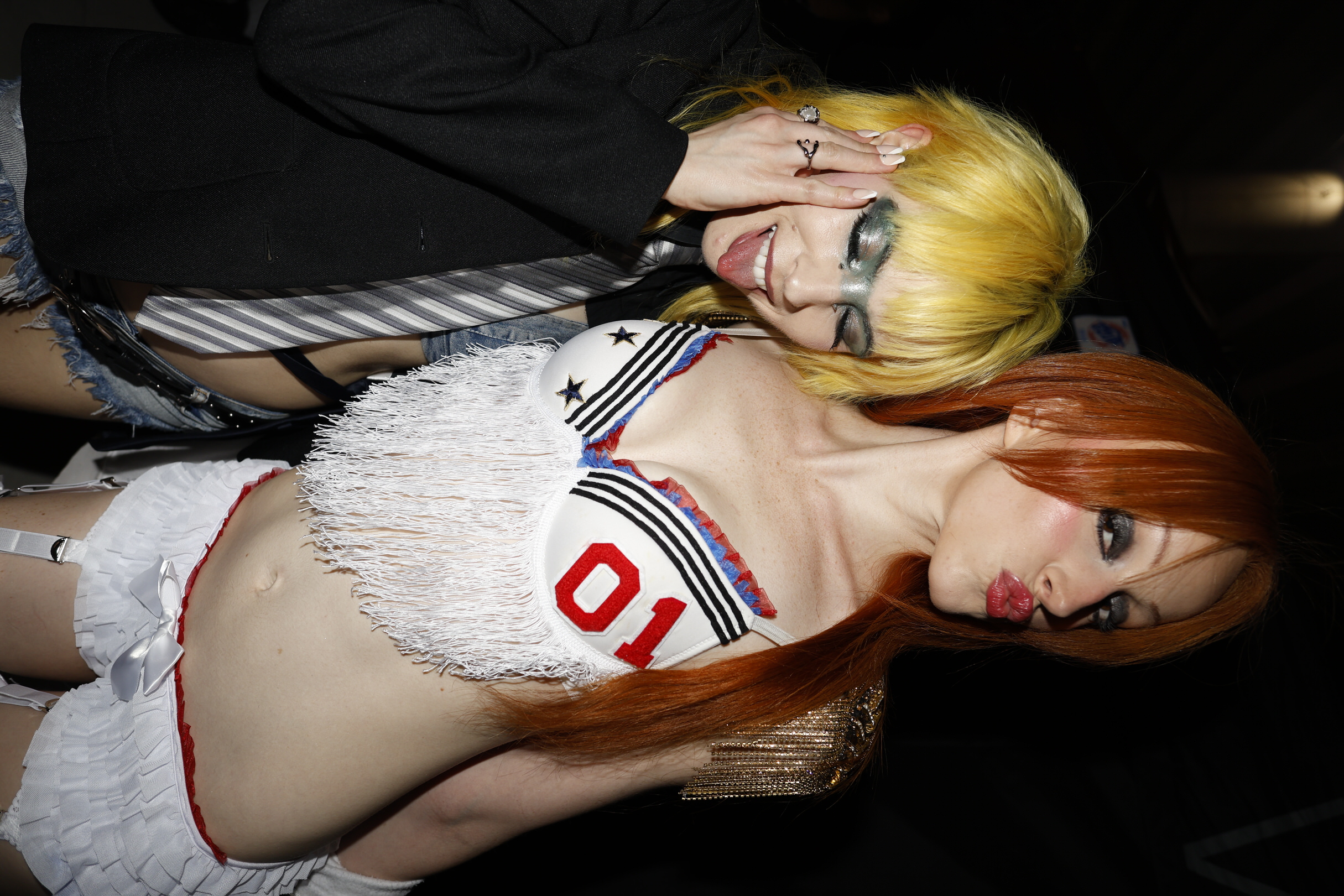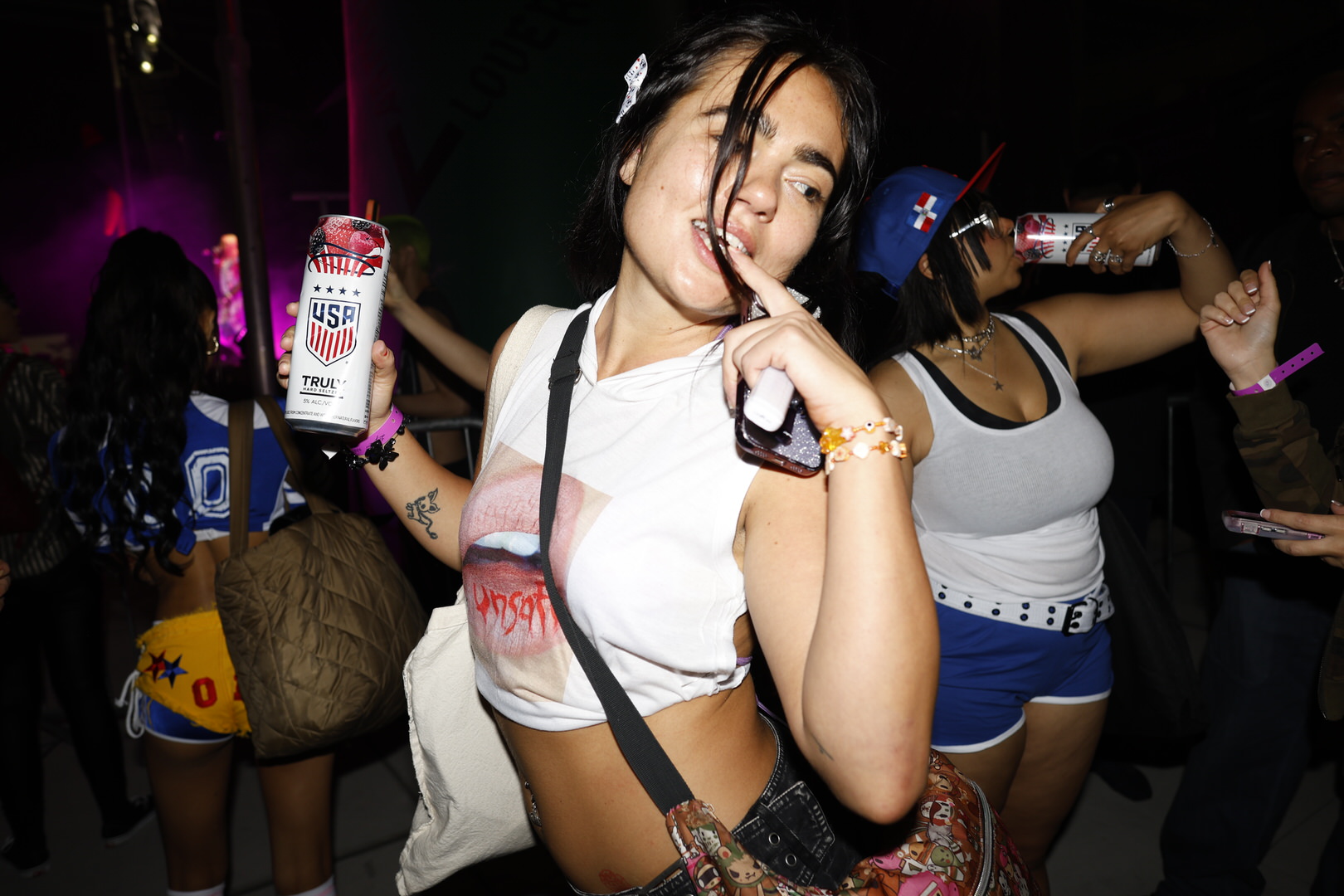These Days, It Only Goes Down in the DM

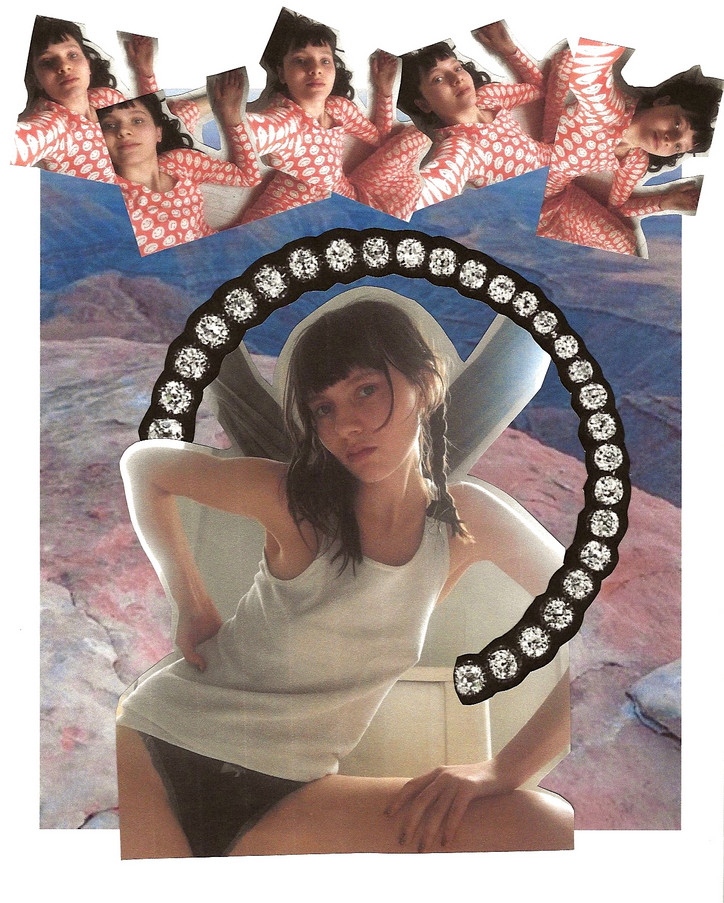
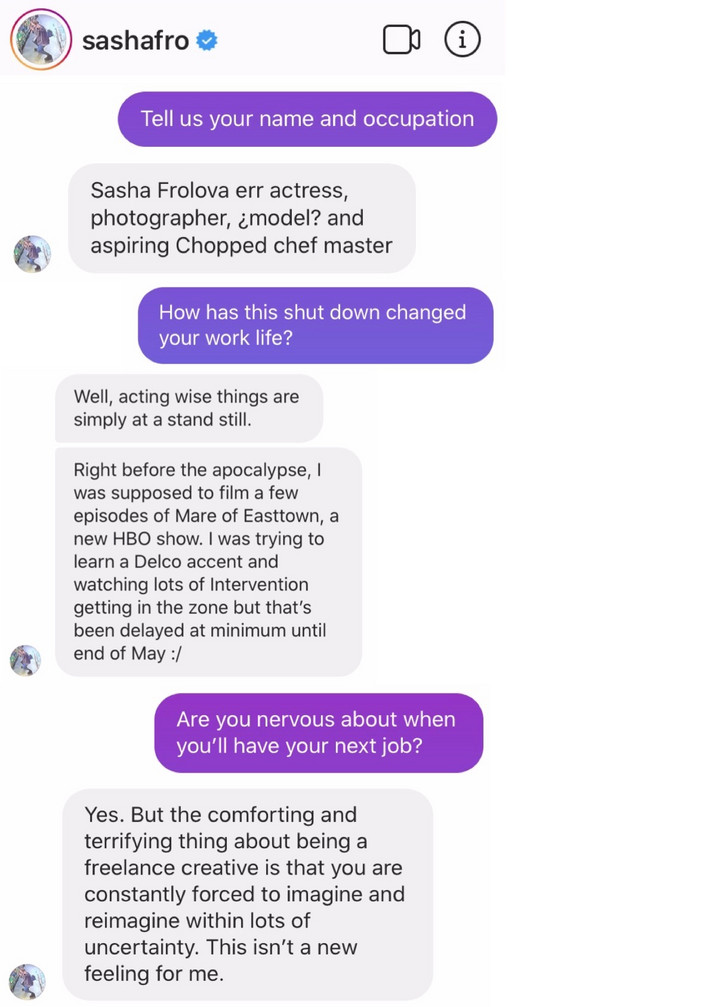
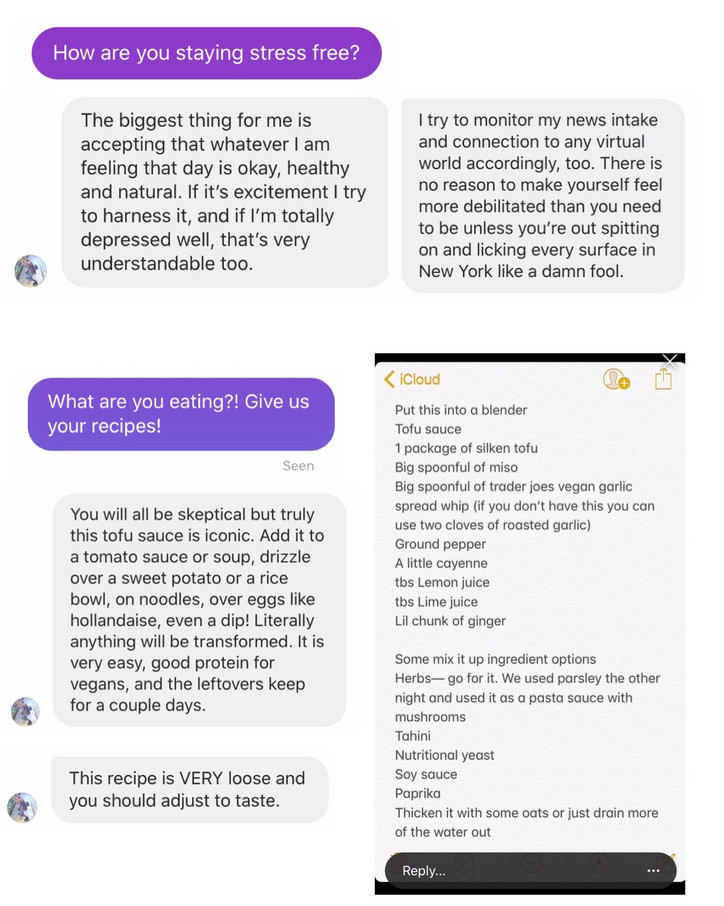
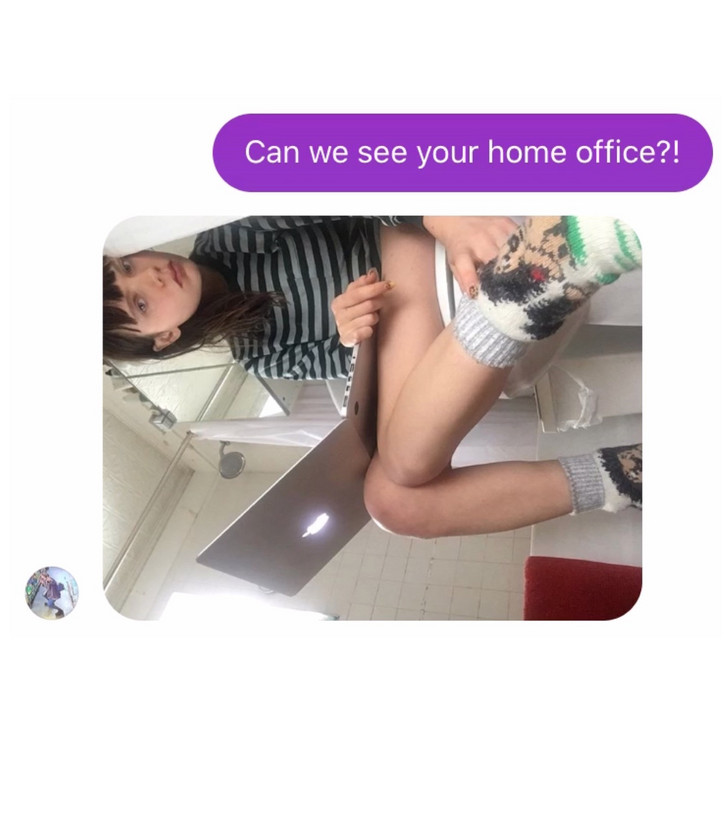
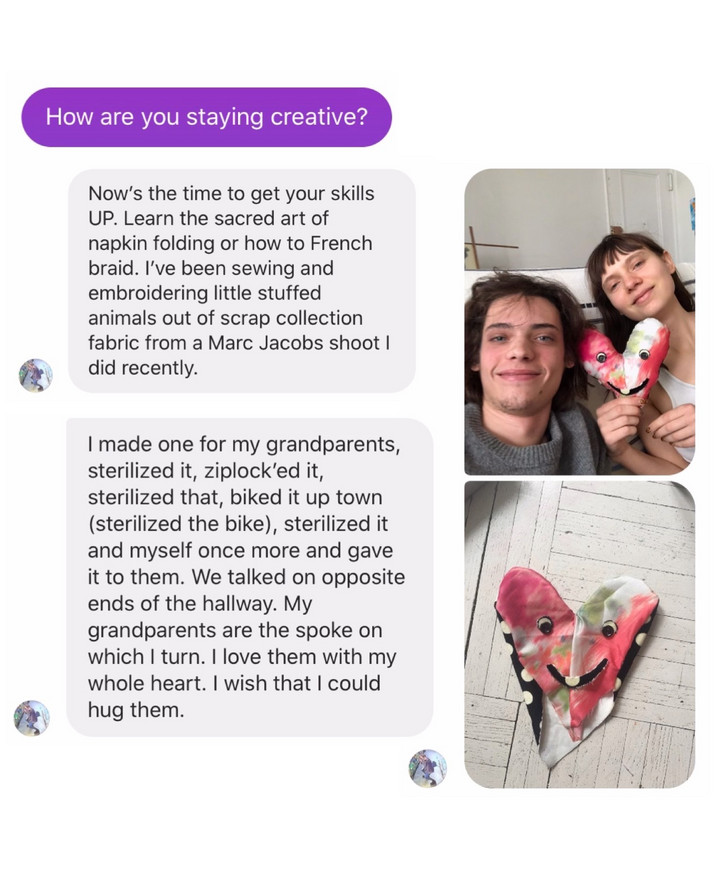

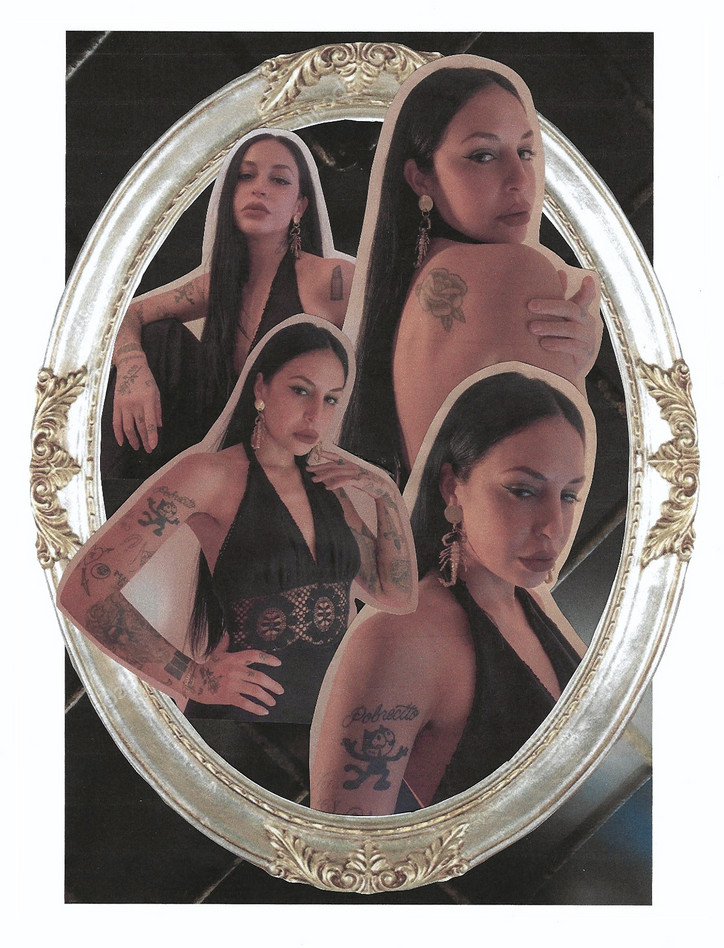
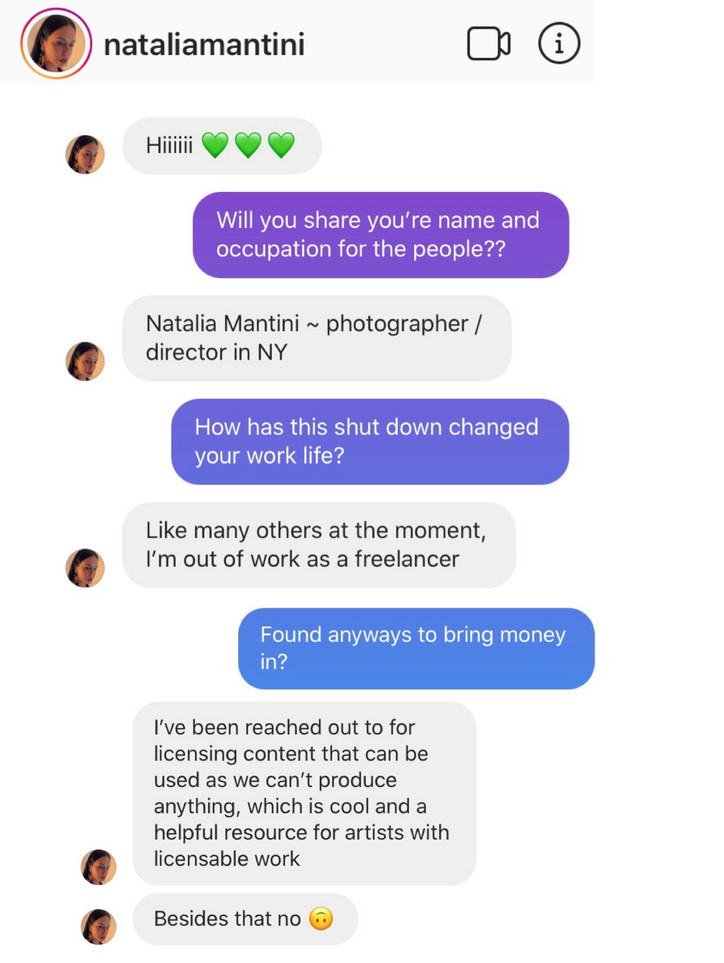
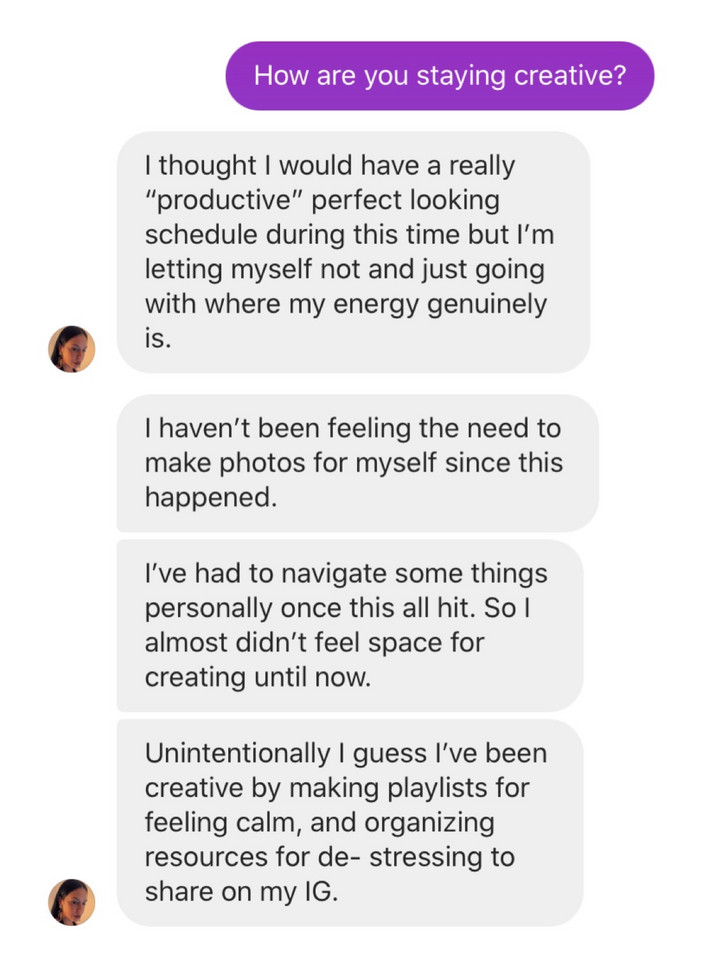
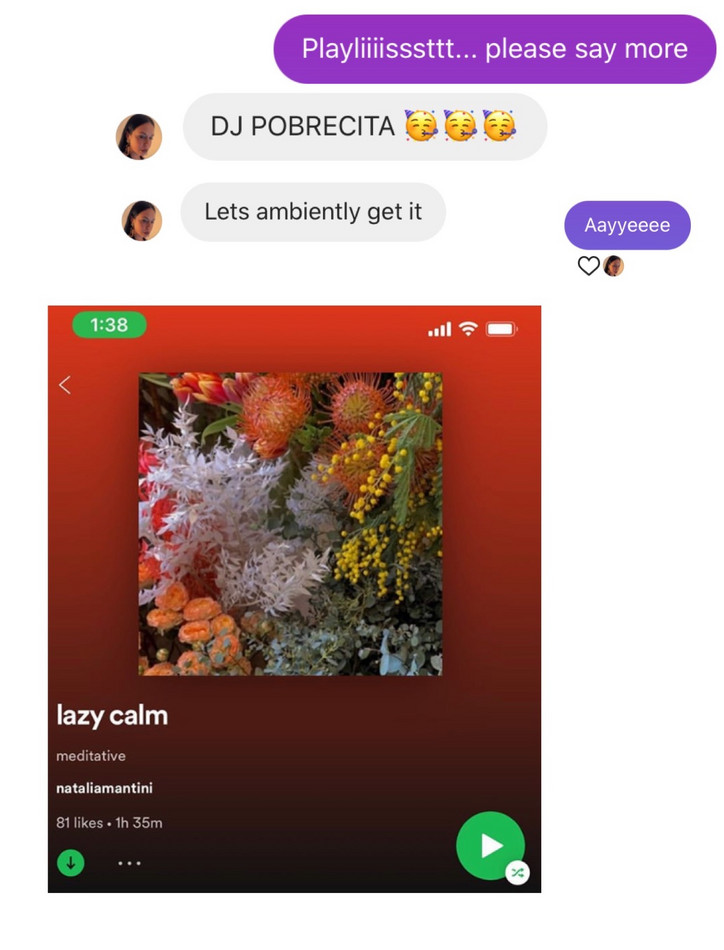
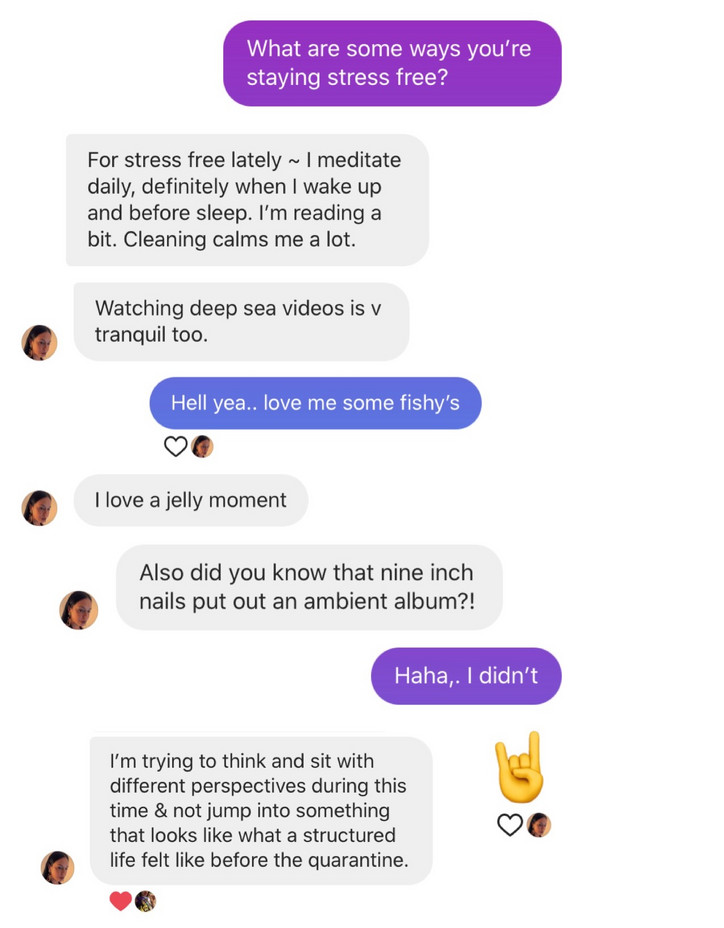
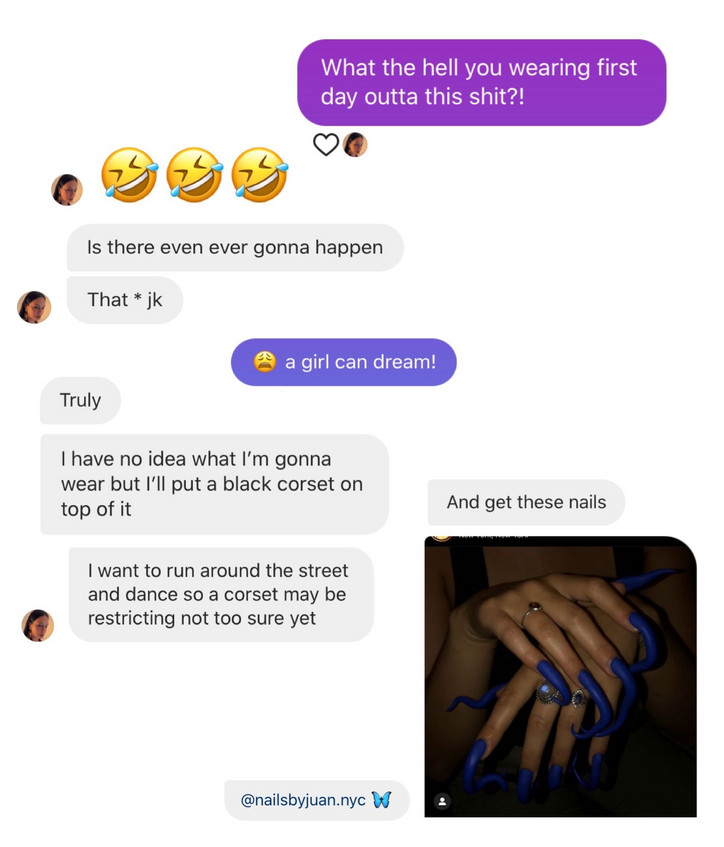


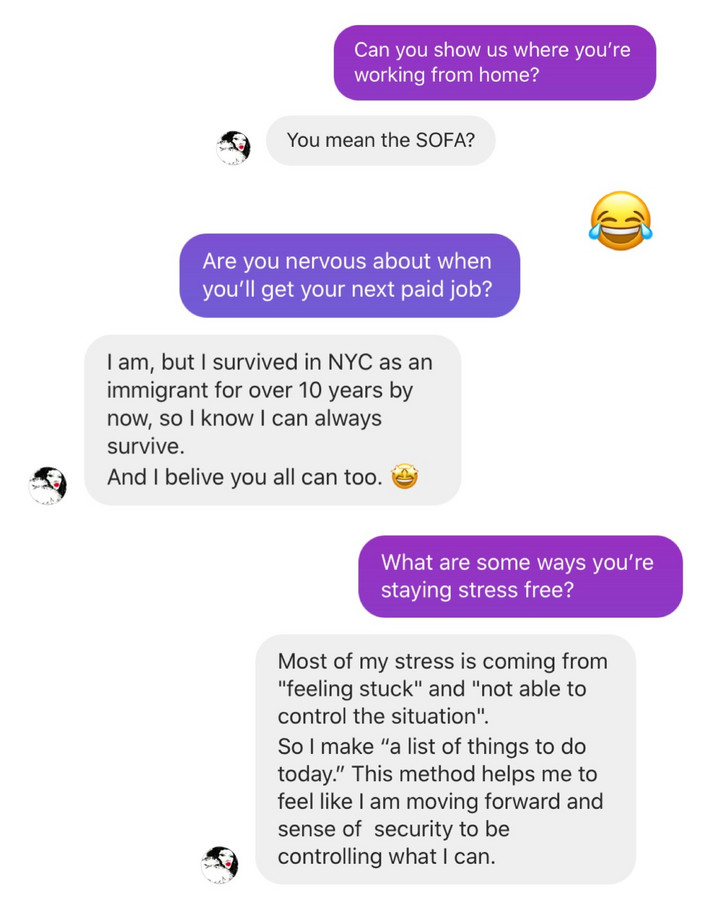
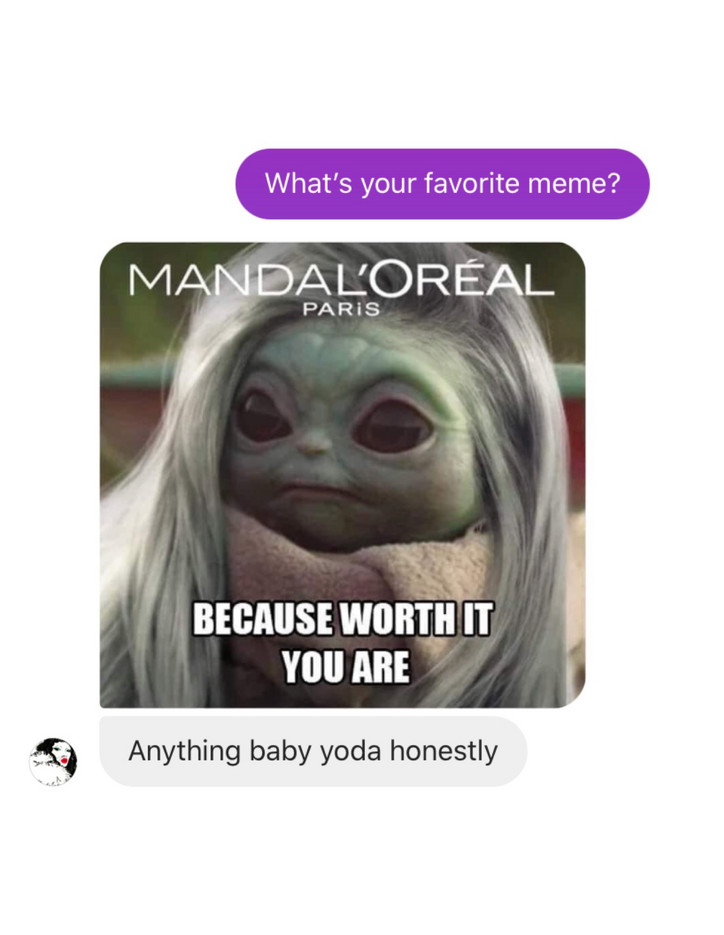
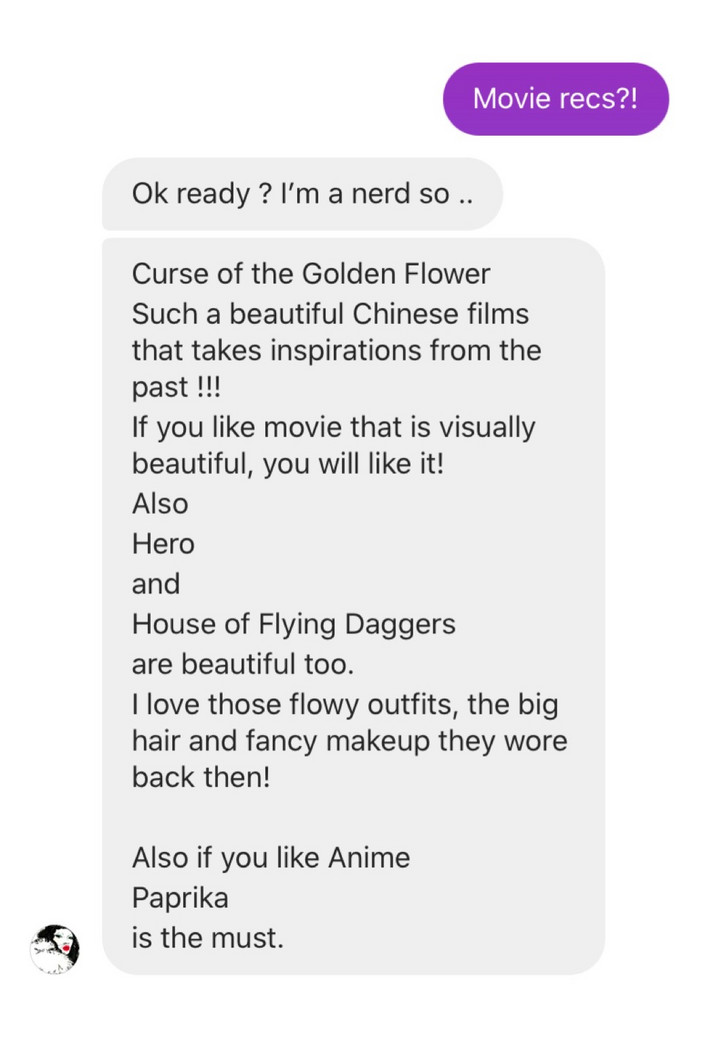
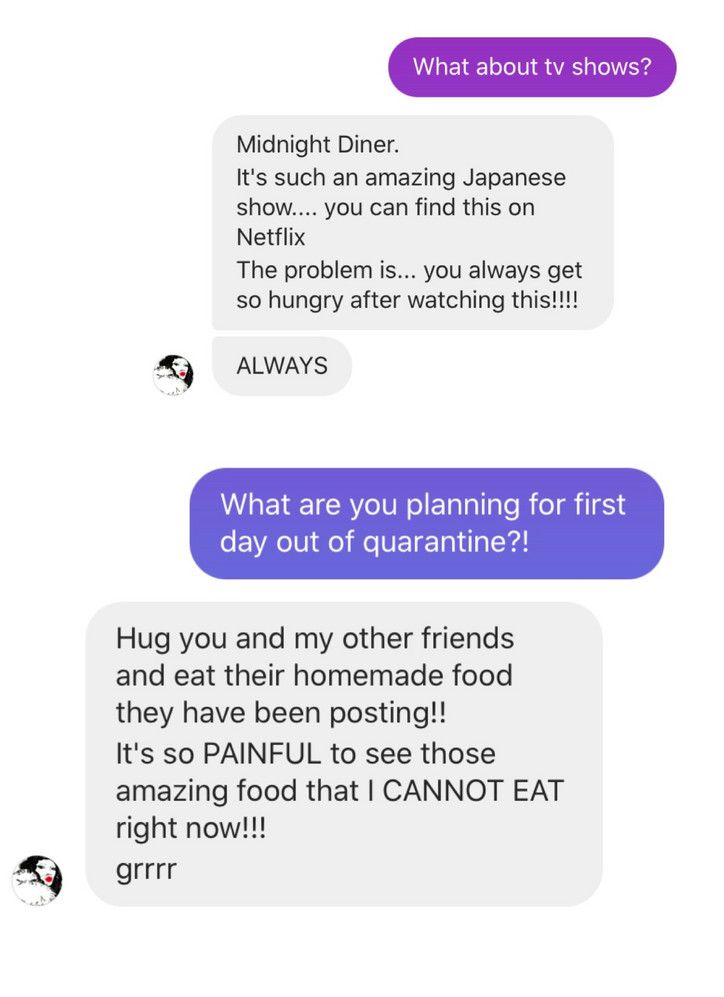
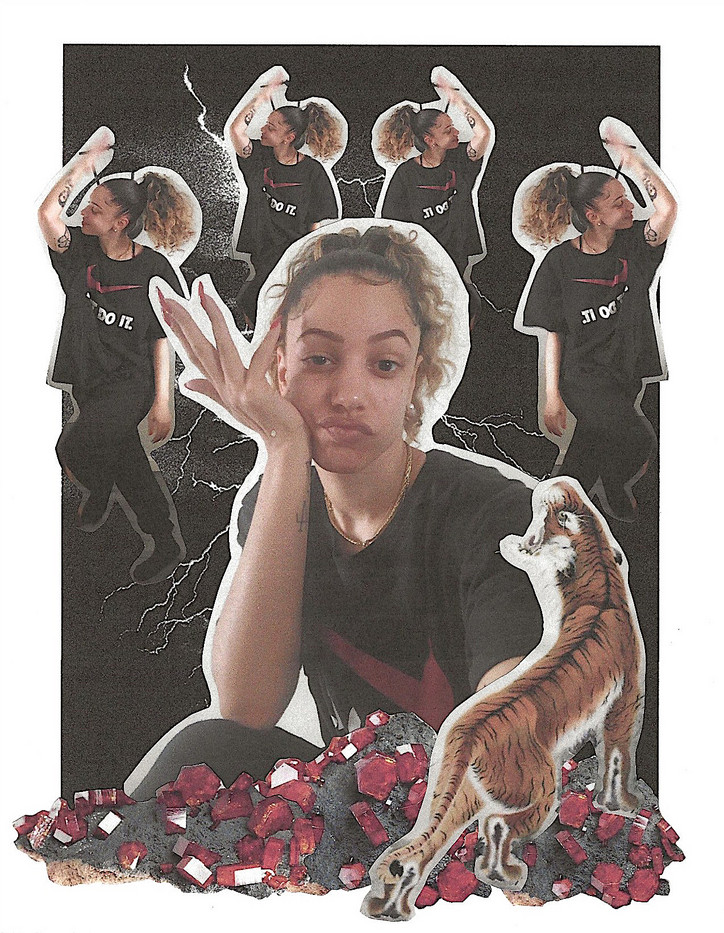
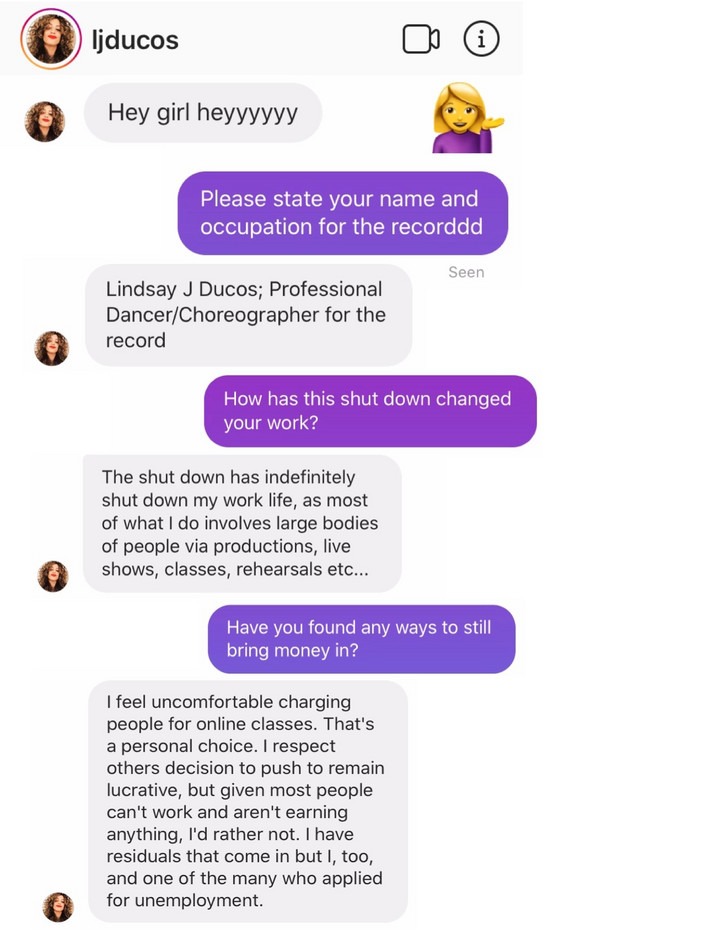
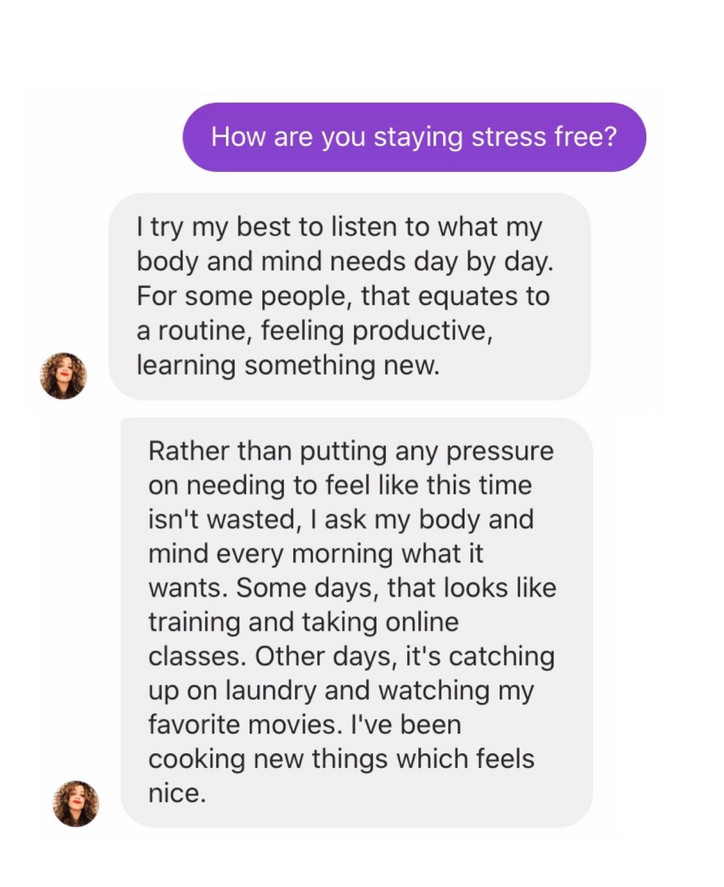
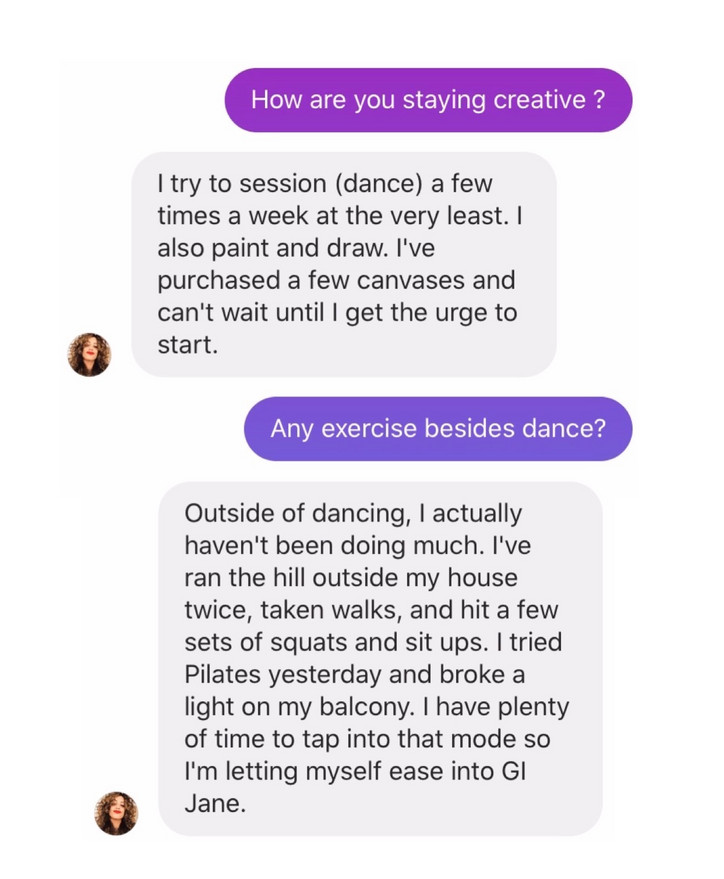
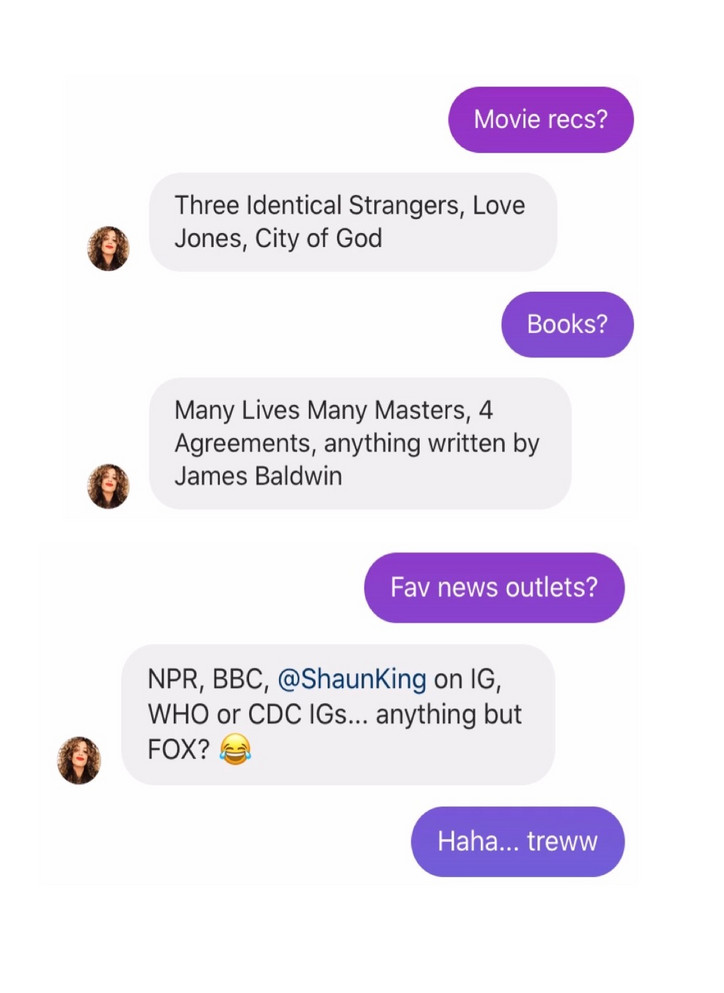
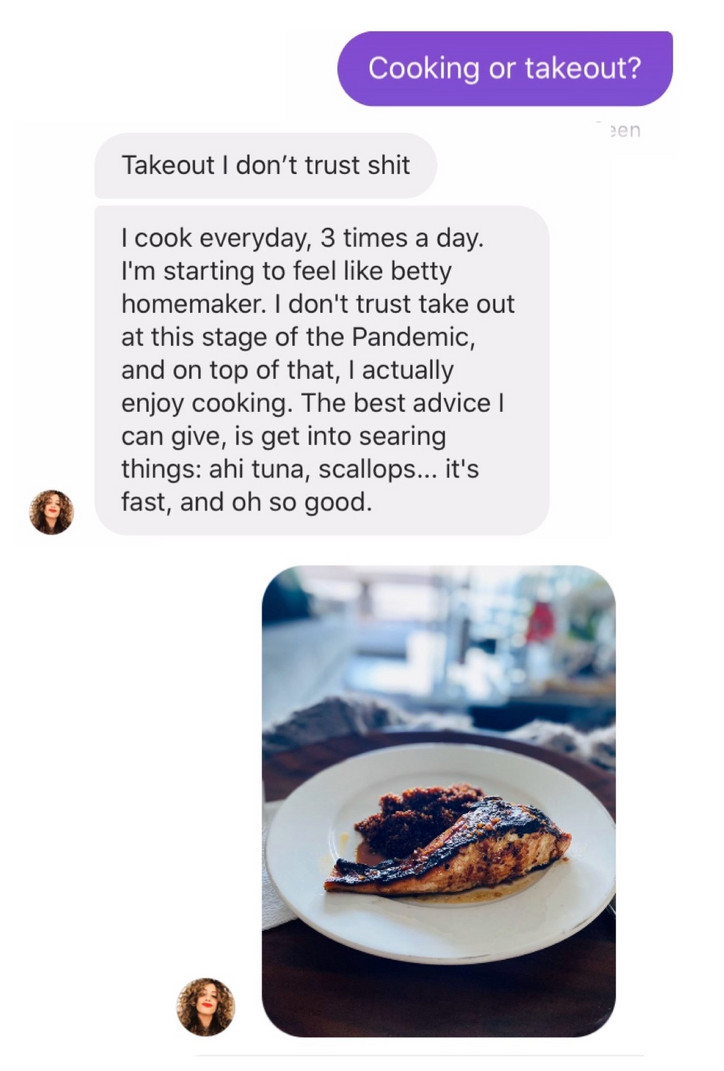
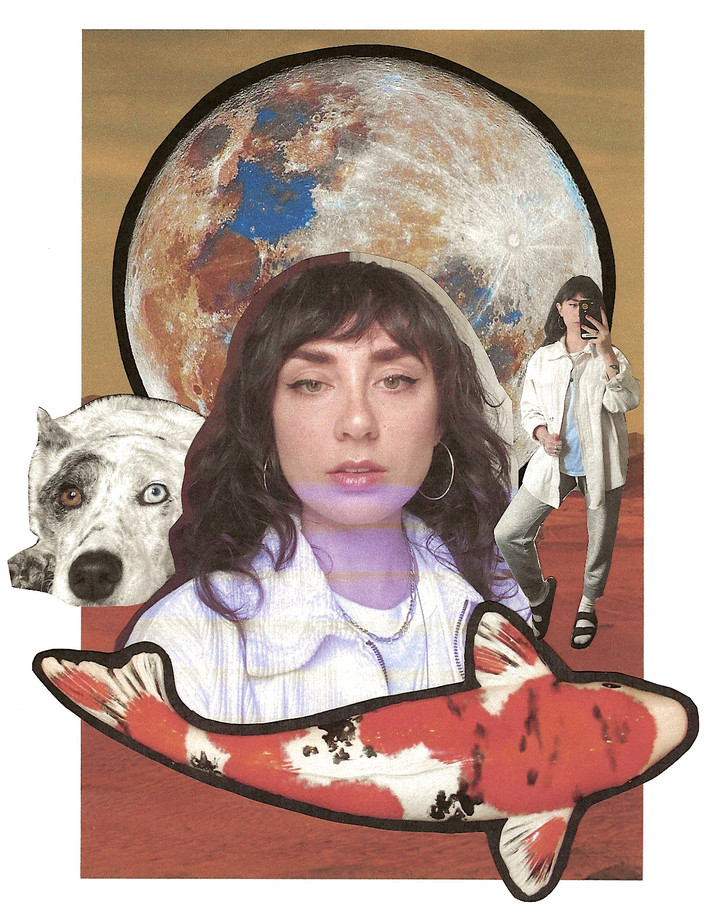

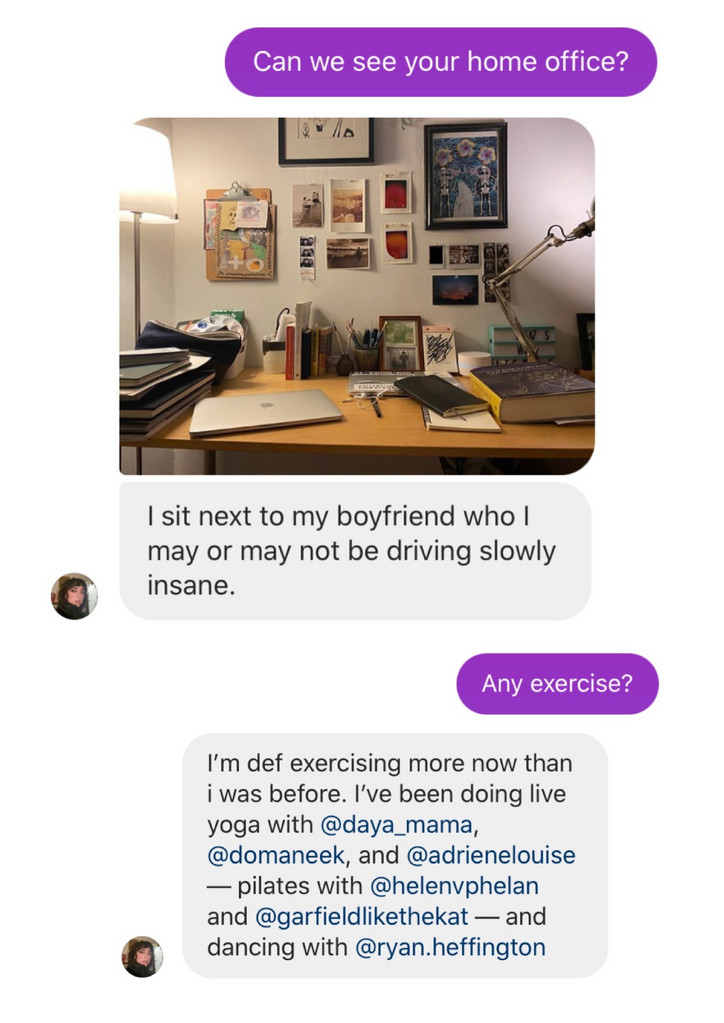
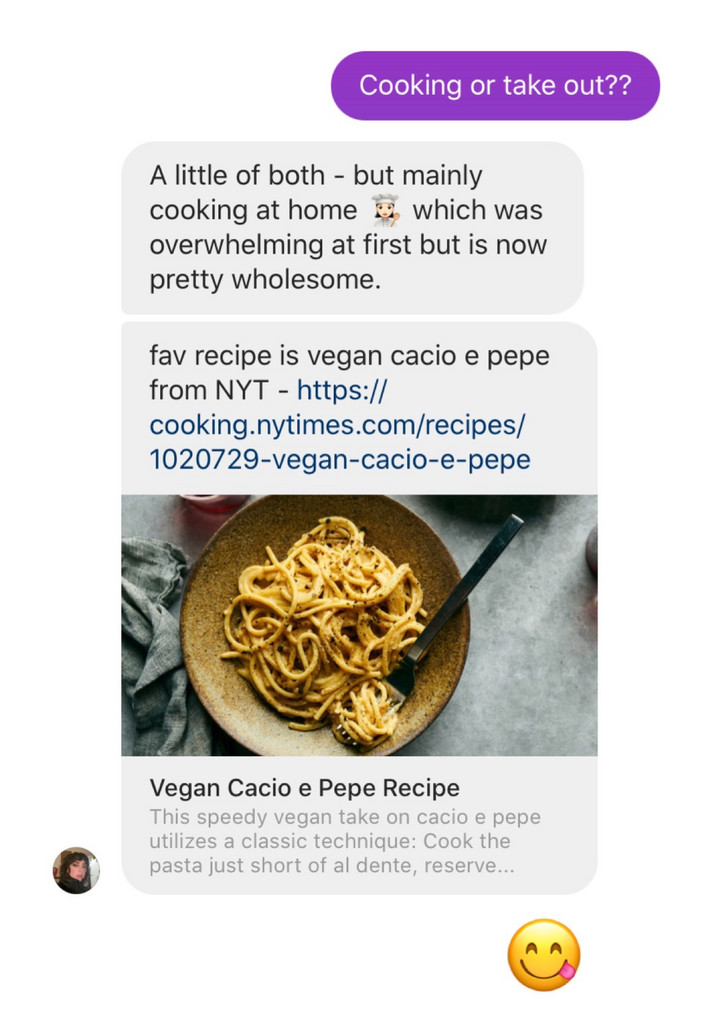
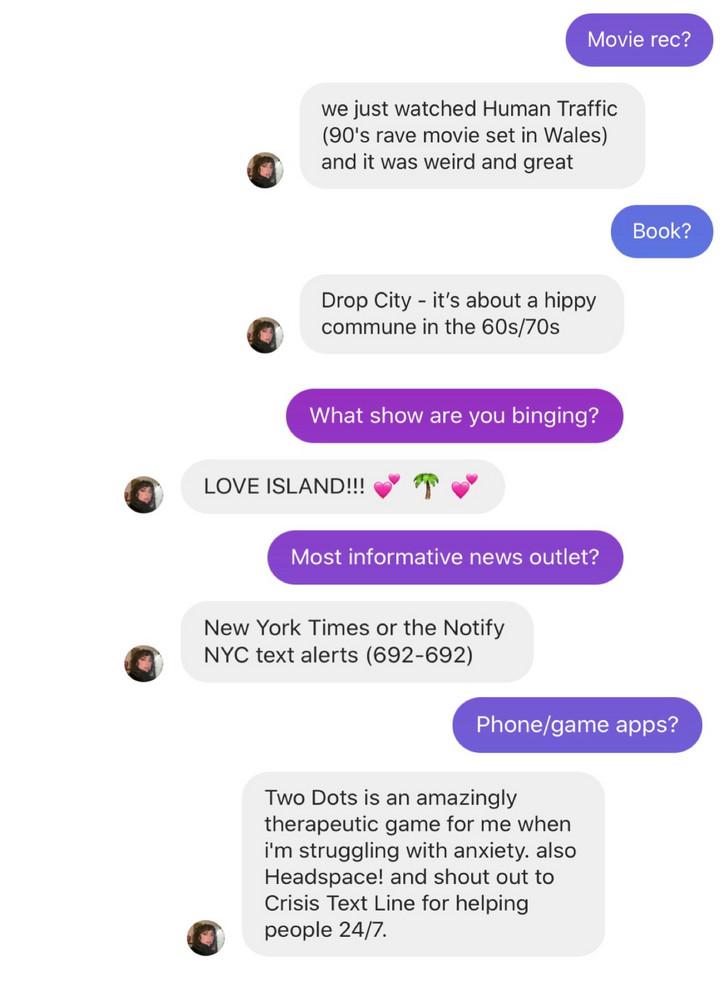
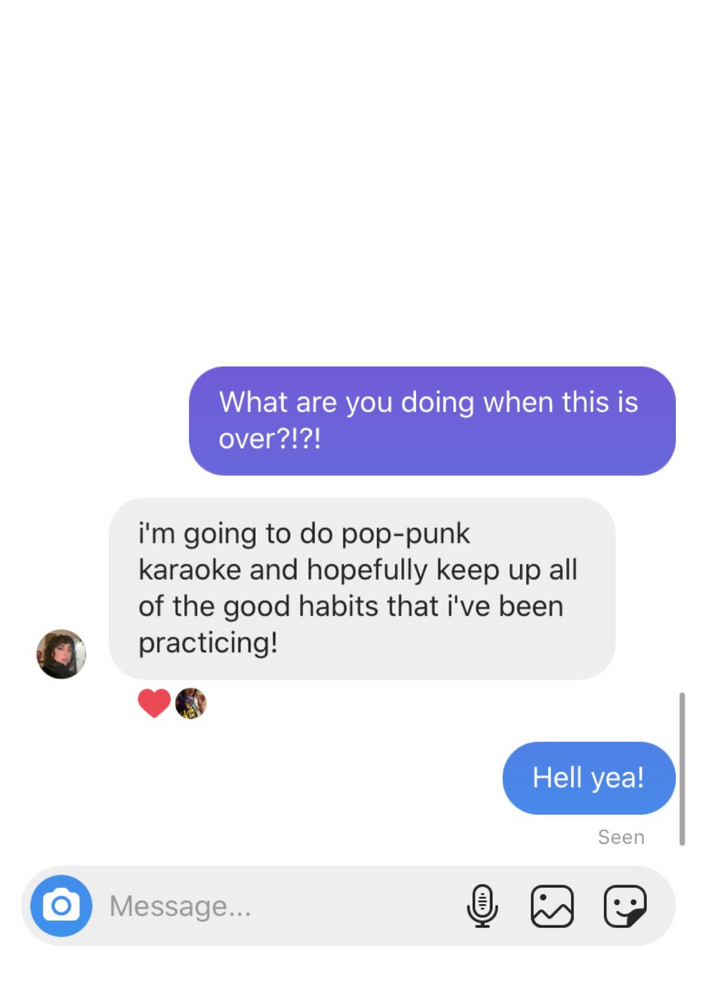
Stay informed on our latest news!
































Now in their late 60s, my parents are still writing, navigating an increasingly unrecognizable media landscape. The remaining magazines they freelance for have smaller budgets, and book advances are typically a fraction of what they once were, making it harder to eke out a living as a full-time writer.
While Playboy remains an influential brand, its business model has changed too: in 2020, new CEO Ben Kohn announced that like so many other publications, the magazine would be shuttering its print editions and move entirely online. That same year, it became a public company, trading on the NASDAQ exchange as “PLBY.”
From its inception in 1953, Hugh Hefner steered Playboy into a brand that represented many different things to different people. Some saw it as a roadmap towards an aspirational lifestyle; to others it was an emblem of free speech and expression; to still others it represented all that was wrong with modern heterosexual culture and was a symbol of the exploitation of women under patriarchy.
However people felt about Playboy, its journalism was always central to its cultural relevance: where else could you get an in-depth interview with Martin Luther King Jr. (1965) or Palestinian political leader Yasser Arafat (1988) and read fiction by Joyce Carol Oates (1970), all alongside centerfolds starring the likes of Marilyn Monroe (1953), Anna Nicole Smith (1992), and Dita Von Teese (2002)?
To see a publication with such an extensive history shutter its print magazine in 2020 felt like a real loss.
Since then, I’d been mulling over a new angle for Playboy. Is there a way to revive the magazine and be financially soluble? Can the magazine retain its core tenets while expanding inclusion along the axes of race and gender? I had some ideas for a path forward, so I set up a meeting earlier this year with Playboy CEO Ben Kohn, who I had been indirectly introduced to (more on that here).
Before our meeting, I had poured over all of Playboy’s publicly available financial records and had a working idea of where the company stood. At the restaurant in Brentwood, Kohn ordered a stack of pancakes and spent the hour regurgitating one liners I had heard him say in countless interviews. (“The brand is popular among the Gen Z crowd…”) But I knew that Playboy was in debt and that its stock was down. From personal experience, I knew that Gen Z didn’t really register the brand as "cool," and that the cheap clothes they license with PacSun weren’t anything I’d ever wear.
Ben — who has a background in private equity — didn’t seem to share in my enthusiasm about the value of resuscitating the magazine. Instead, he talked about the digital platform Playboy Club, which is comparable to a thoroughly unexceptional version of OnlyFans.
In the past, Kohn has stated that Playboy is “the one platform that has a true brand that stands behind it.” But the brand was built on journalism. Once you sacrifice that, what’s left?

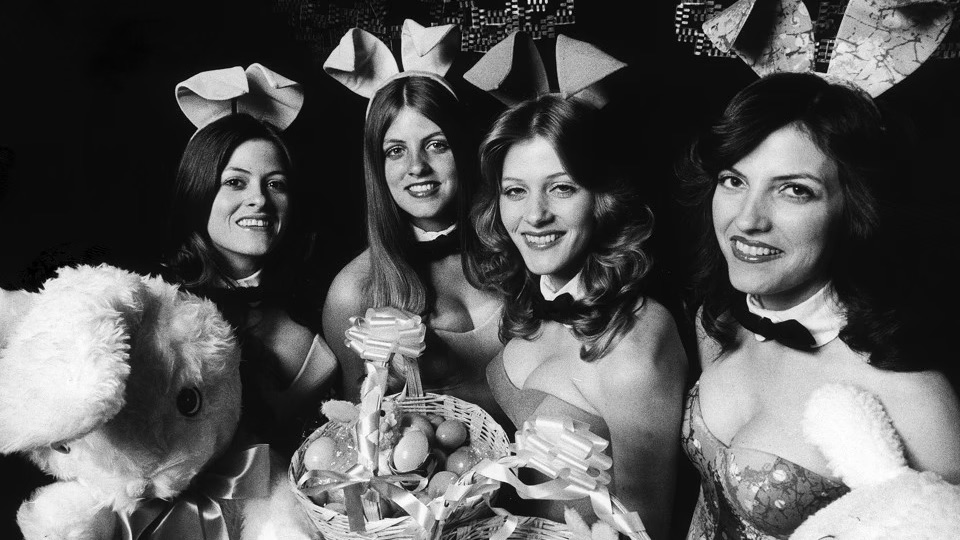
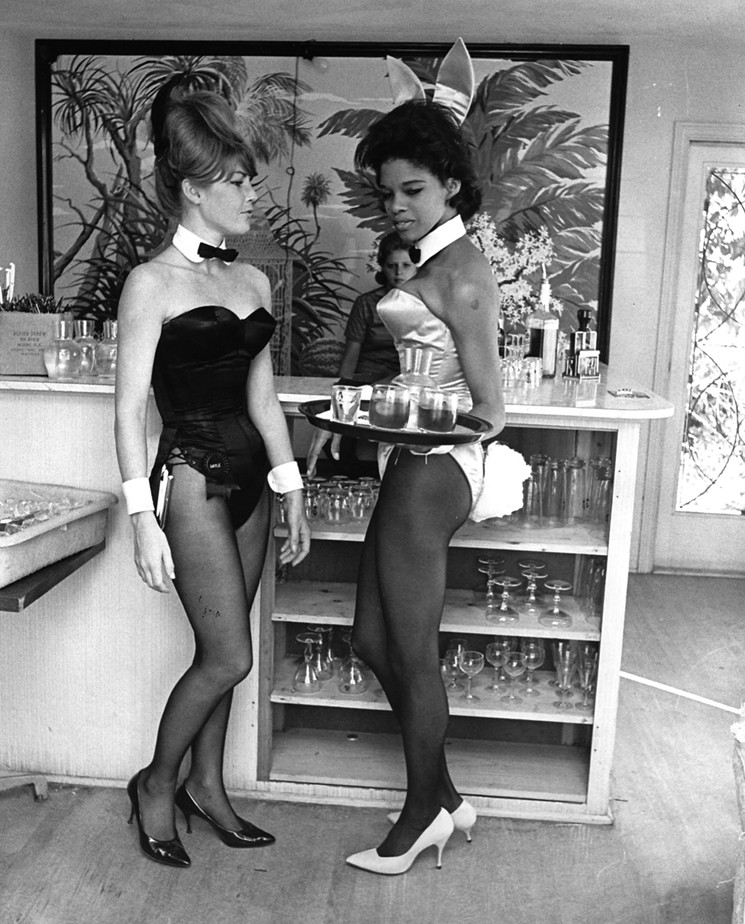
‘I read Playboy for the articles’ was a common refrain to justify buying the magazine. The subtext is that a person must create an excuse in order to consume pornography. But the double movement of the phrase was always dependent on the veracity of the claim that one could reasonably read Playboy for the articles. Remove the journalism and fast forward to a cultural moment when pornography is more readily available and less taboo, and there’s really nothing special about a Playboy devoid of journalism.
Nothing came out of my meeting with Kohn, so I decided to stop pursuing the old Playboy and to write about it instead. I started at the very beginning, by calling my mother. I asked if she could send me some photos from her Playboy days, and maybe a few quotes about what her and my Dad think of the fate of the company.
My plan for the article at the time was simple: a couple paragraphs up top introducing my parents’ former roles at Playboy for context, launch into a discussion of the company at present, wrap up with a call to arms about saving journalism, etc. Over and out in a tight 2500 words. Almost immediately, I sensed hesitation. “Is office a real magazine, or is it online?” my mom asked.
Her next question regarded the scope of my article. Would it reference my prior work as an escort? If so, she had a “hard line” about being involved. Given that I hadn’t started writing yet, I responded that I couldn’t guarantee what would be covered, but that escorting didn’t seem directly relevant to the piece and that it likely wouldn’t be discussed.
That didn’t seem to assuage her concern. The next day, I woke up to an email in which my parents declined to give a comment for the article. Their explicit reasoning was a preference for digital privacy in the age of social media. Implicitly, however, was the implication that print media is somehow more reputable than online publications, and that public association with ‘sex work’ made them uncomfortable.
I am so grateful to have two parents who love me deeply, and their approval means so much to me; I couldn’t help feeling this as rejection of me as both a writer and a person. It felt ironic that a part of my life regarding sexuality and labor was off-limits as a condition for their involvement, since I was ostensibly writing an article whose subject was their own former workplace at a men’s lifestyle magazine known for its centerfolds of nude and semi-nude models. Furthermore, the distinction between print and online media privacy felt arbitrary: my mother wrote a memoir about her life in 2005 (the year after Facebook debuted) in which I — as a toddler — am discussed. Why is digital space perceived as more exposed, when similar disclosures of personal information happen across both mediums?
Ultimately, Playboy’s failure to make an effective transition from print to digital journalism doesn’t indicate that good reporting doesn’t happen in online spaces. It just means that writers have to work harder to find them, to make them themselves, and to sometimes waste their time at meetings with corporate CEOs just to ultimately arrive at publication of their work elsewhere.
I believe in the transformative power of good writing. I believe in free sexual expression. For better or for worse, this is the state of Playboy in 2024, the state of journalism, and the state of my family.
Will it always be this way?
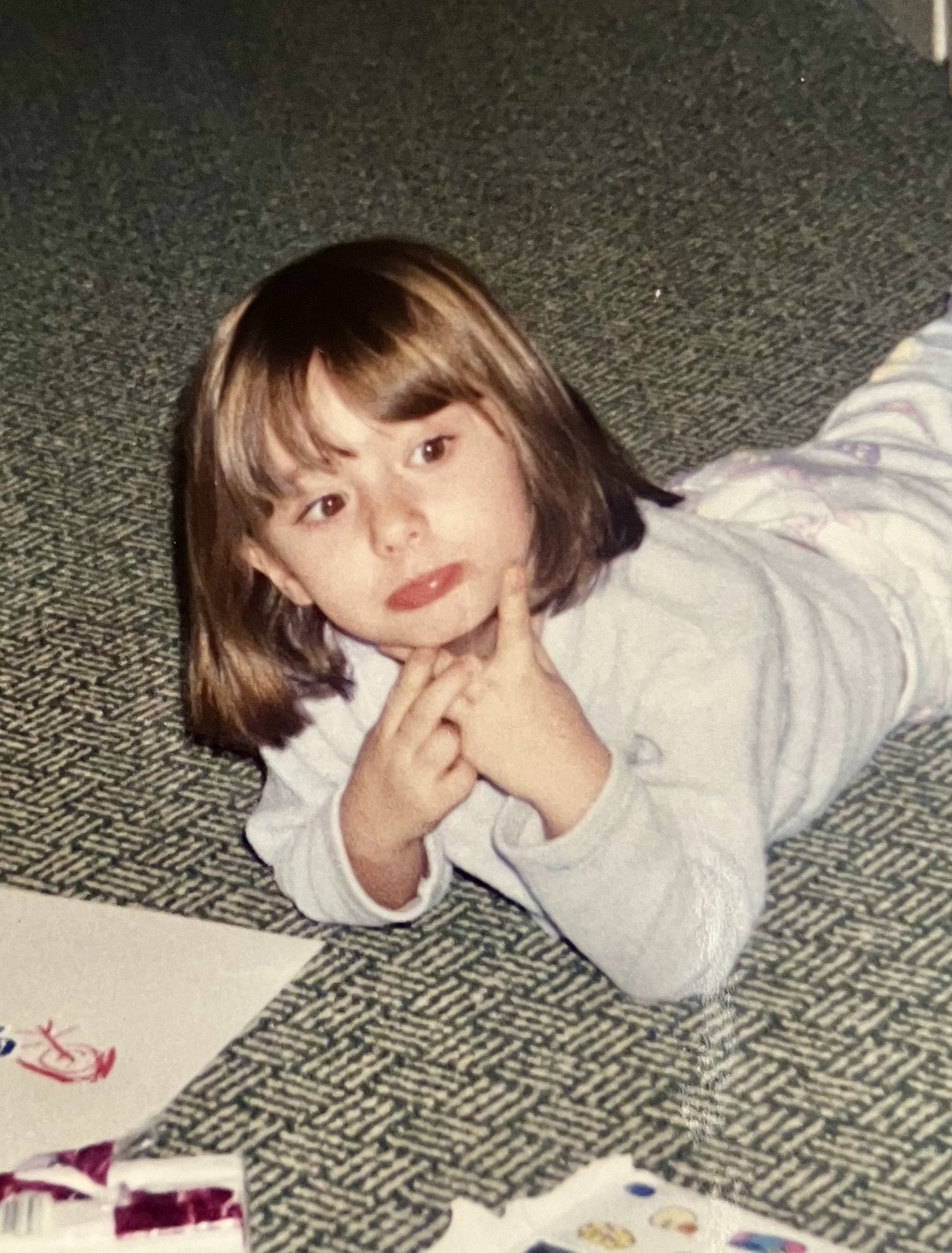
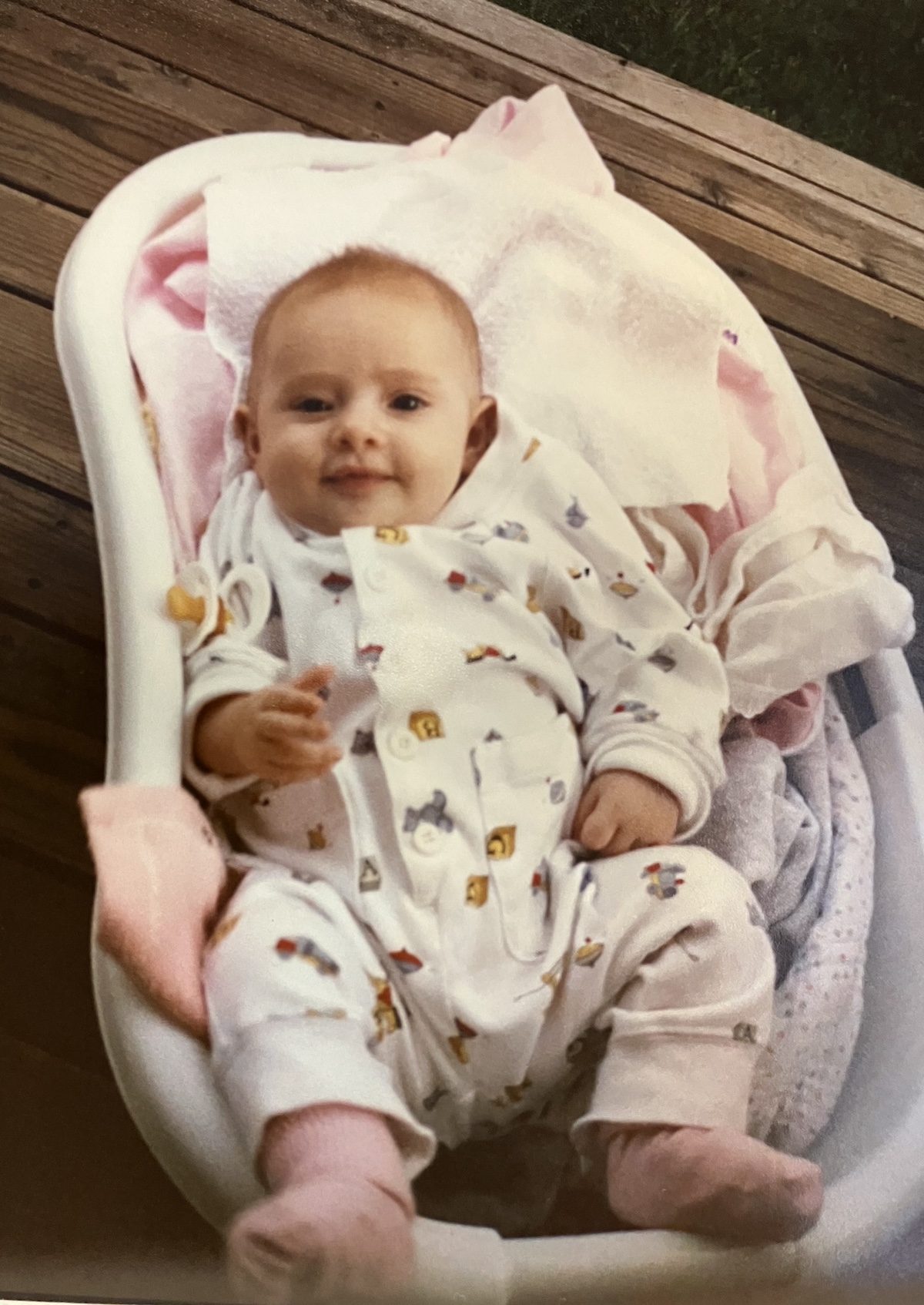
"a child of Playboy"
photos courtesy of the author
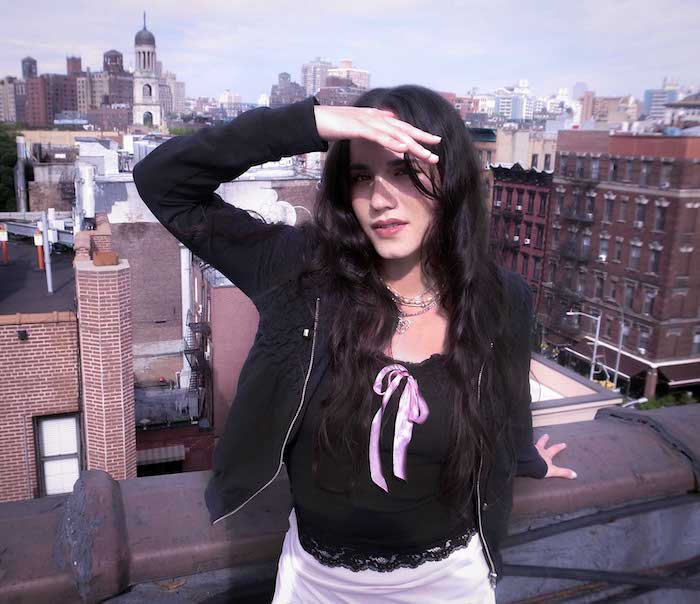
We all lose a sense of wonder as the world hardens us. But within her work, there’s this magical allure that draws you in. An undefinable quality that everyone can connect to. Channeling her inner teenage self, Wonders never strays away from visual choices that make her audiences wonder themselves — “Why does this make me feel all warm and fuzzy inside?”
Whether she is creating fashion films for some of the girlys’ favorite brands — from Sandy Liang to Anna Sui — or directing her own short films, Wonders’ work really fabricates an inviting universe of its own.
office caught up with Wonders between projects to talk her filmmaking inspiration and favorite movies.
What originally got you interested in filmmaking?
Almost every night my brothers would be watching action movies so I grew up on a lot of those. And then my siblings and I would make movies — pretty unwatchable action movies. I don’t think I realized it was something I could do as a career until I got to college and started studying filmmaking. I thought the most fun version of my life would be spent making movies, so that’s what I wanted to do.
What was the first short film you ever created and what inspired its story?
I went to Harvard and there was a tiny but strong documentary program that felt cloistered off from the rest of the school. So I started off with documentaries and going around Cambridge and Boston. I like that the camera gives you a nice shield and an excuse to enter spaces you wouldn’t normally enter. And I like how the world can unfold in beautiful, intriguing ways if you’re just present and observing. It gave me a nice starting point and taught me to ground a lot of my work in realism. And then my senior year, a visiting filmmaker, Athina Tsangari, taught a fiction filmmaking class and that sort of changed everything. She was the first person to really believe in me.
A couple of years ago, you had the incredible opportunity to direct the short film I <3 NYC under Sofia Coppola’s supervision. What was that like? Are you inspired by the very distinct aesthetic that Coppola embraces?
I remember seeing Marie Antoinette when it came out in theaters when I was young, and I think that was the first movie where I was like, 'Oh, this is art that expresses something that I feel and can relate to.' She's a big reference for me and working with her when I was her assistant on The Beguiled, she carried herself on set with a soft power that cultivated a sense of calm on set for everyone. I love that she owns her version of femininity and owns the things that she's interested in. Even if some people think those things are frivolous or soft. I think that's something that Sandy has too.
I agree with there being so much attention to detail in Sofia Coppola's work. I love her use of really major storytelling elements told through these subtle details. Do you live in New York?
Yeah, I've been in the East Village for seven years.
What inspires you creatively about the city?
Visually, I think there are more beautiful, interesting places in America that I’m drawn to. But really, it's just people here in the firmament. I get a lot of energy from my friends who do different things from me — visual artists, journalists, designers, writers. I love drawing inspiration from different worlds and not just from a monolithic source.
And I love filmmaking because it requires heuristics beyond just writing. The writing part is very much you and the page. But filmmaking requires people. I spent the majority of my life in school where you’re forced to look at the world with a reverent distance, with an academic lens. And I love that in filmmaking you’re part of the world and you need other people to do it, even if you’re constructing a fabricated reality of the world through the process of making movies.
I think the people are what make the city. And I also agree that the creative synergy that can pop up when you have people around you who are creating through so many different mediums is really beautiful. How would you describe the aesthetic that your work takes on?
I don’t know if I can. People always tell me, 'You have such a specific point of view,' but I don't know how to describe it. Some people have said it's heightened realism. With my Sandy stuff, I think we have a lot of the same references and we're both really connected to our teenage Kawaii aesthetic-loving selves.
Do you think about connecting to your inner child or teen a lot within your work?
I think so. I'm consciously connected to those years. It's a time when the world feels like it’s emerging and you're discovering things you like culturally. So I feel like I'm always excavating and trying to recapture the feeling of that time — the excitement of discovering things. I loved reading about and consuming New York’s cultural output at that age, but it all felt so far away and now it doesn't, which has a cool, predestined feeling to it.
What’s your go-to, on-the-run outfit that you would throw on if you were busy and working?
Usually a black skirt and a zip-up hoodie.
On that same day, what would be in your bag?
I like having Tulsi Tea with me. I usually have a satellite version of my makeup bag, mints, and headphones. Some of my makeup go-to’s are Anna Sui powder and this Japanese eyelash curler my friend showed me, the Relevée Lash Curler.
I have to ask — your favorite movies?
Currently: Welcome to the Dollhouse -Todd Solandz, Boy - Nagisa Oshima, Earrings Of Madame De - Max Ophuls, and Lovers on the Bridge - Leos Carax
I was originally going to ask you what movie you'd like to play yourself in. But then I thought that may be too derivative. If you could drop into a movie and swap places with a character, who would you pick and why?
Zhang Ziyi in Crouching Tiger, Hidden Dragon. Imagine being able to move like her.
Do you have a dream project to work on in the future?
I made a short film set in Michigan about a girl's middle school sleepover that's coming out soon. I'm working on a feature film about a girl who leaves her nursing home job and joins this farming commune in the early 2000s. But I also love working on fashion films. It's a nice way to break up larger projects and it gives me a different perspective to see my work through.

Leading up to sets featuring Tinashe, Arca, Horsegiirl, Slayyyter, Julia Fox, Bob the Drag Queen, and more, we sat down with Rayne Baron — the literal mother known as Ladyfag — to reflect on the past iterations of the festival. We talked heels, health code violations, and how to throw a good party.
How are you? How's your month been?
Ladyfag— Busy in the best way possible. Pride is always fun for everyone, but obviously it’s more work for me than for most.
I know it’s a little early, but have you been to anything good this month?
Sadly, throwing parties makes you miss out on a lot of partying. I’m in the thick of trying to get everything ready for everybody else. So it kind of limits the amount of partying I do.
It’s a marathon, not a sprint.
Exactly. It’s my party and I’ll cry if I want to.
So true. Where are you from? Did you grow up in the city?
No, I’m Canadian. I’ve been here in Brooklyn for nearly two decades, so I definitely feel like I’m a New Yorker now. I’ve been in New York since early 2005 and I started working in nightlife about a month after arriving. So I’ve definitely done my time — seen the ups and downs and changes and participated in nightlife in all the different ways, from bartending, doing door, go-go dancing, throwing parties, promoting for other people, producing — I was doing anything that needed to be done to make a party happen. I’ve seen it all at this point.
Before I came here, I was in Toronto doing nightlife in a different capacity. I didn’t throw parties, but I used to MC and go-go dance with a promoter named Will Munro — he was a huge inspiration to me. I have his name tattooed on my finger to make sure that everything I touch is touched by his ethos. He died a few years ago, but he had this super queer punk DIY spirit and he was incredible. He did a party called Vazaleen and that’s where I started. One of our mottos is, “An army of lovers will never be defeated.” That comes from Will Munro, which comes from an old queer zine back in the day. I think anyone who came out of any kind of queer scene in Toronto knew him. He’s definitely an inspiration to a lot of people. He taught me the kind of nightlife I wanted to be a part of. Obviously, what I do is very different than what he did. But at the same time, our careers have similar trajectories. I’d like to think he’d be pretty proud of what he taught me. He taught me you have to build stages for people, especially people who don’t think they deserve a stage. I take that seriously.
I’m surprised to learn you aren’t from the city. A lot of people talk their shit about transplants and sometimes for good reason. I think there are a lot of people who come here for school, party for four years and then leave — they think that New York is a place where you can go to vacation and never have to give anything back.
I think New York is the opposite — it’s a really bad place to vacation. If you come to New York, you better wake up in the morning and give it your all or go home. It’s not a city that’s kind to people just doing nothing. It’s that whole, “If you can make it here, you can make it anywhere,” idea — that’s because people come here with dreams and they wake up every morning to try and make their dreams happen. I can think of a ton of other cities where your life would be much easier to live, and the quality of life would be a lot better. I don’t think vacation is something that New Yorkers know too well.
I think people really appreciate when people come here from somewhere else and they choose to stay here, and they choose to give something back.
And sometimes it’s hard. But there’s no city like New York, or there aren’t many cities like New York, where the energy is so alive. And that’s what makes New York so exciting to live in. It can also make it difficult because everybody’s busy in their own worlds trying to make a million things happen. But even though it’s difficult, the city is really open and welcoming to transplants. Because if you’re bringing something to the table, no one’s going like, “Oh, who’s the new guy.” It’s more like, “What do you have to bring?” It cuts out the bullshit, because at the end of the day, people don’t always have time to sit and talk if you’re not bringing something to the table. And in a city filled with people trying to make big things happen, that’s not a selfish thing.
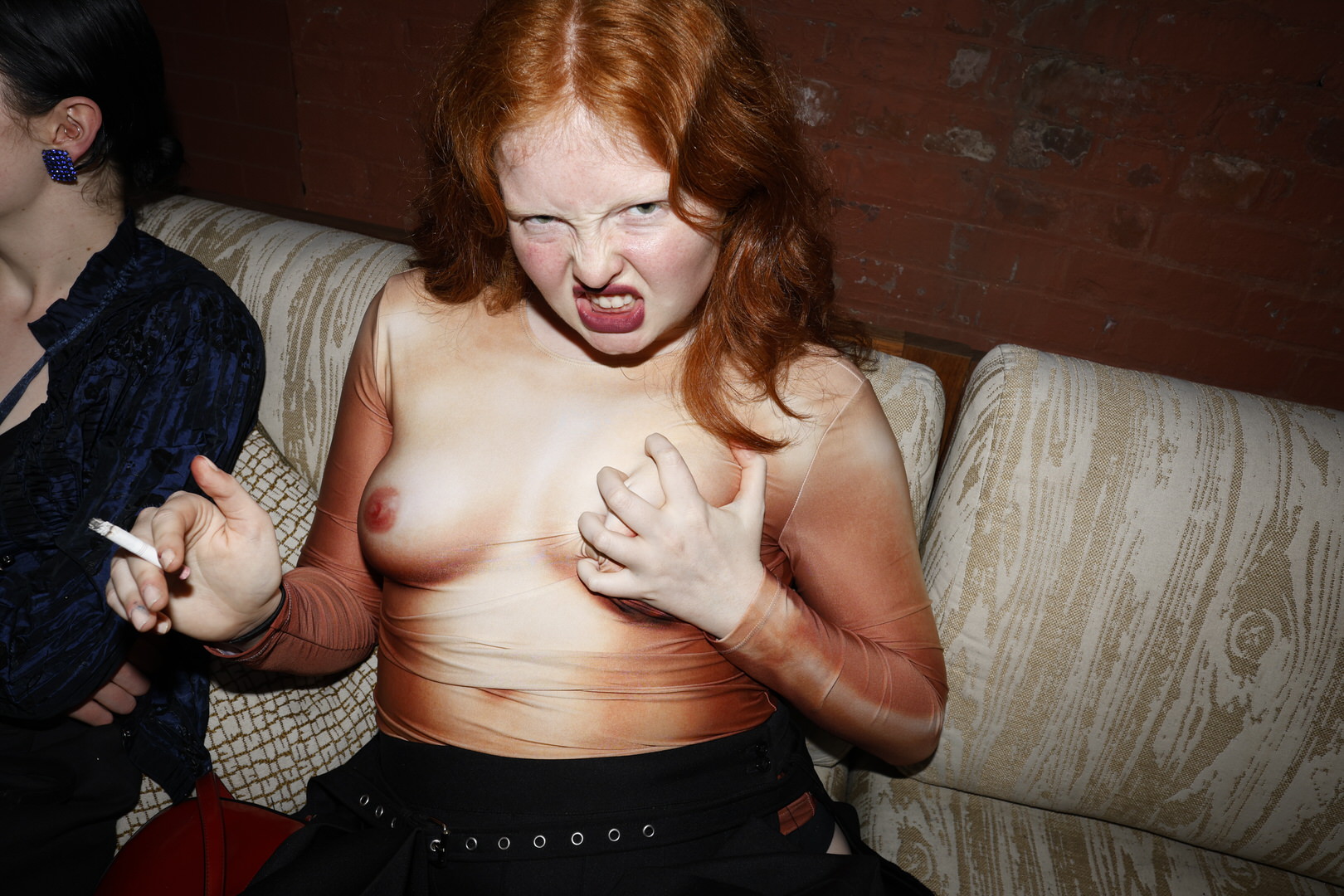
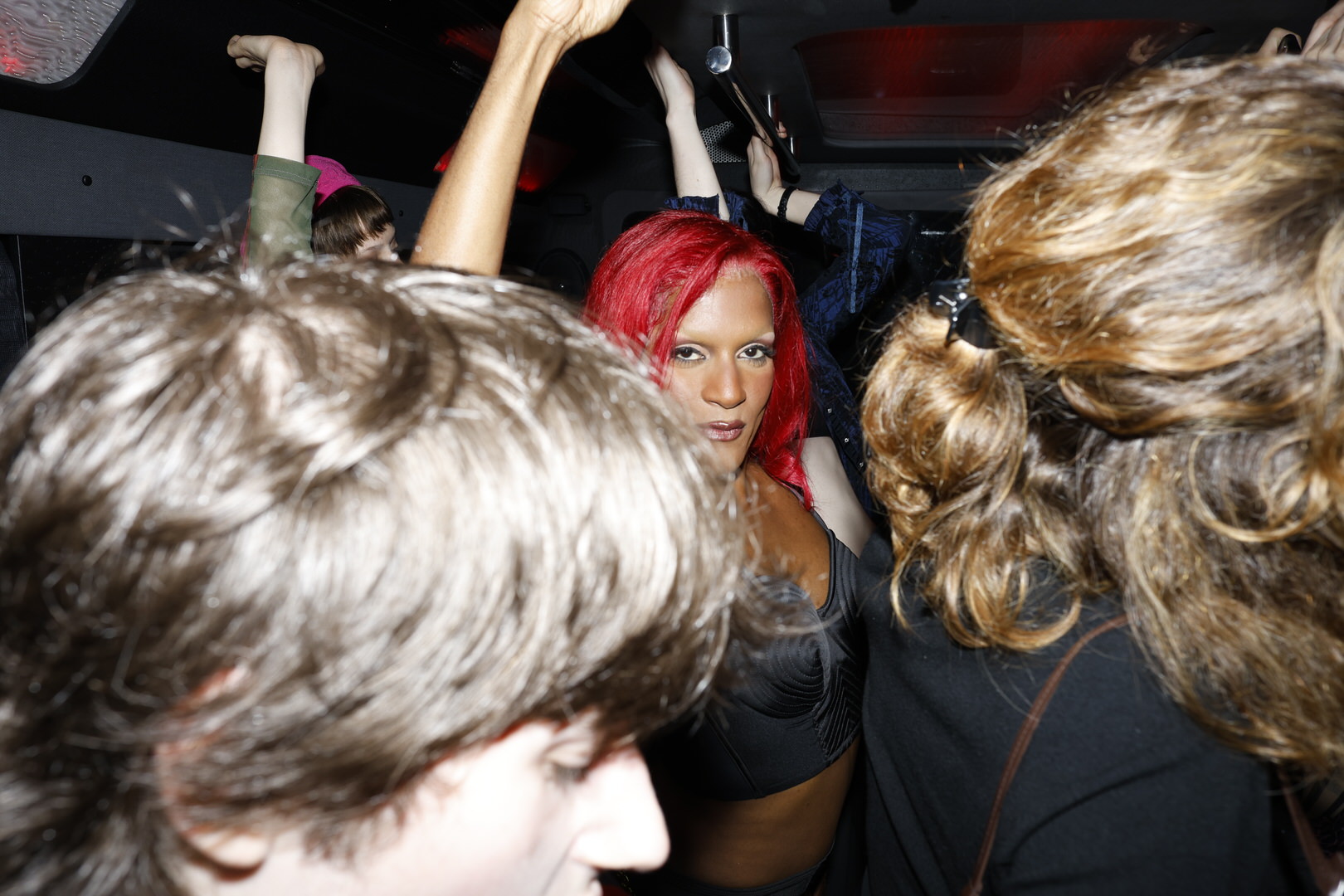
You came in 2005 — it’s not like queer nightlife wasn’t already a thing.
If anything, it’s the opposite. Nightlife was definitely on fire at that point. Obviously, it was pre-social media days, so you had to go out eight nights a week if you wanted to know what was going on. Obviously, that’s changed. New York nightlife is incredible right now — it has its little ups and downs, but it’s a really amazing, vibrant place.
Nowadays — I say that as if you aren’t also partying right now — there are a lot of young people who might also be new to the city, and they’re trying to recreate the New York of the 80s or 90s. I think everyone forgets that there’s already a scene here and they’re trying to reinvent the wheel. It doesn’t seem like Ladyland is trying to do that. It seems like you found something that might have been underrepresented at the time.
There were some things like Ladyland — definitely the LGBTQ+ Music Festival, but those were more like circuit parties with a pop star or a few performers. There was nothing like it and I was confused as to why. Maybe somewhat naively, I tried to do one, and it worked. I don’t know if being naive helped. It was harder than I thought it would be, but I realized that it was the right thing to do. Because we’re on our sixth run and it’s grown so much. Now it’s two days and over three zones under the K Bridge, which is an amazing venue. And now that it’s larger and longer, I can put more and more amazing queer talent onstage. Seeing everyone excited about this lineup, seeing what each artist brings to the table — that makes it worth all the stress.
It’s an insane lineup.
Thank you. We’re pretty proud of it. People always ask us who we’re most excited about, but I’m excited about everyone, because they’re all in different stages of their careers. There are going to be a lot of small artists here that have never played a festival. And there are a lot of larger artists who tour and festivals give them an opportunity to adapt and create special little moments with their fans. That’s what’s always exciting about all festivals — Ladyland included.
And why wouldn’t you book them if you weren’t excited for them all?
We had Tinashe a few years ago. And she’s such an incredible performer. I mean, she had trampolines for fuck's sake. She really did it all for everybody. We don’t always like to have the same performers, but obviously she has one of the big hits of the summer and she’s a dancer — she has such amazing live energy. Knowing what the hell she’s going to do, I’m still excited for her set. And we have Arca — who’s performed so many different versions of herself — from live shows to DJ sets, you never know what she’s going to bring to the table. And that’s what keeps it exciting.
Lucky Love is coming from Paris just for Ladyland. He’s incredible. And there’s Rahim C Redcar — formerly known as Christine and the Queens, who’s doing their first-ever hybrid DJ set — I’m not even completely sure what it is, but they asked for a mic and have been sending me little clips of music that they may end up leaking at Ladyland. Again, I don’t know. And that’s what’s fun. You obviously want to support your artists and let them do whatever they want on stage — step back and see what they do. It’s going to be an exciting week. Especially when people don’t always have an opportunity to see artists like this.
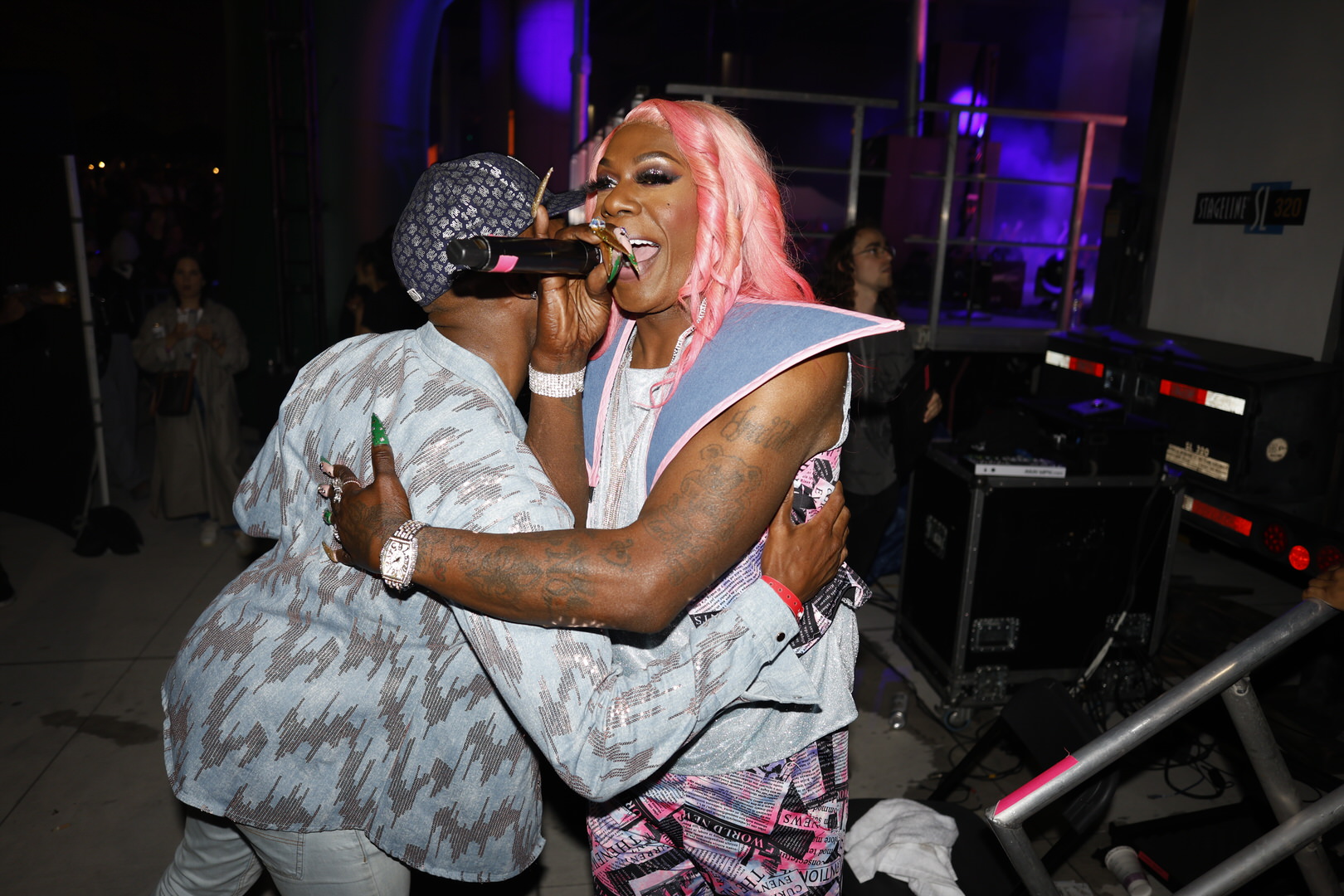
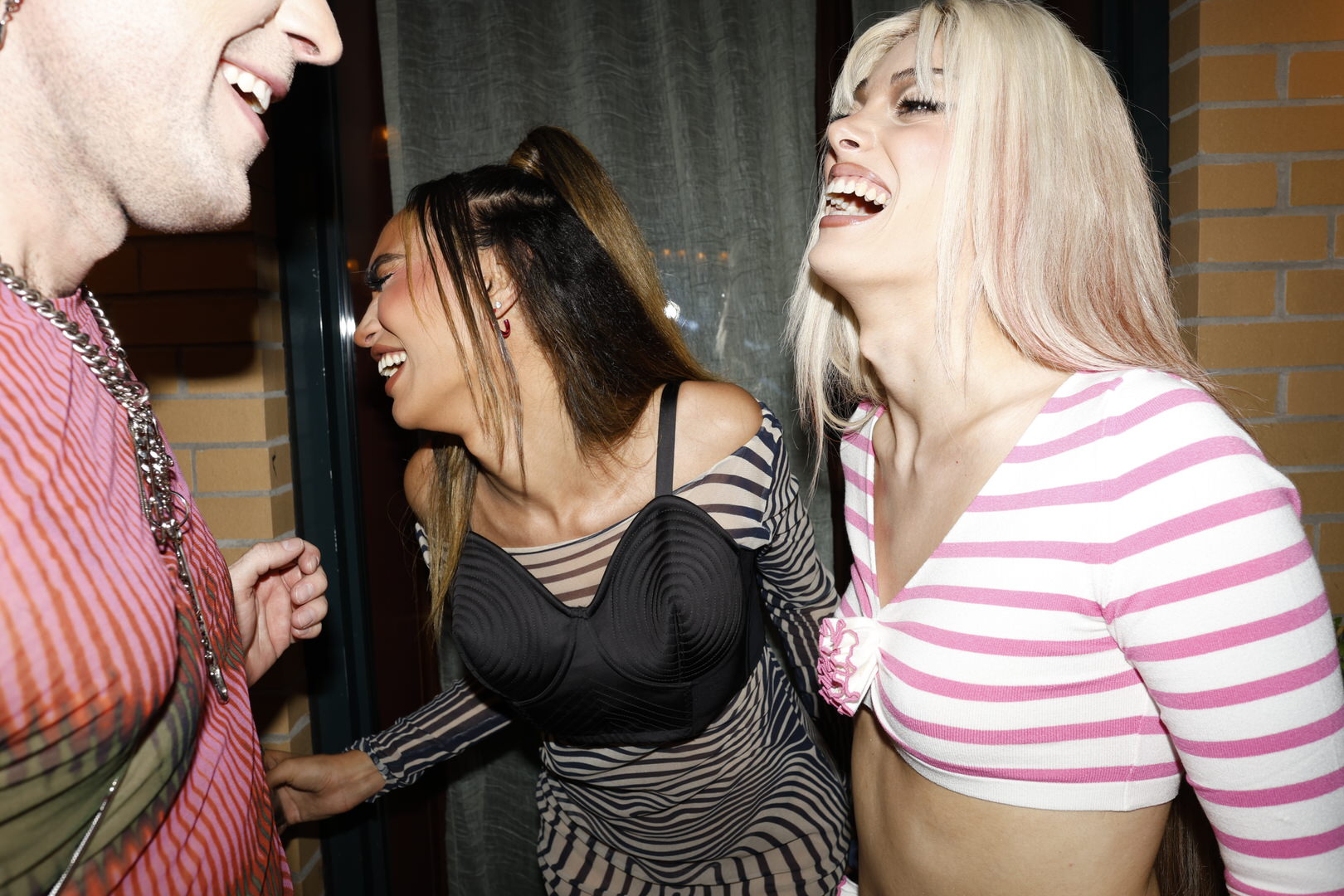
The things that make me happiest are the moments after the festival when I get some time to breathe and sit with my friends and people whose opinions I respect. We sit there and decompress and you know — drink seven bottles of wine. And they talk about the artists and say, “Oh, I’d never heard of them but they were so amazing.” Moments like those are why I do it. Obviously, there are icons onstage who everyone’s excited to see, but you pepper it with people that maybe people haven’t heard of before. I’m trying my best to make sure there’s something for everybody.
I mean, I wear my platforms to every show because I like to see, but if I know there are going to be so many good acts spread out across the area, I’m wondering, “How am I going to run to catch every show?”
I just got out of a production meeting, and there was an area in front of one of the stages that had all these pebbles because it’s a park. And we had to figure out the costs associated with putting down more platforms, and some people on the call were like, “Do we really need to have that just for some people in heels?” And I was like, “It’s gay pride. We have drag queens. People will be in heels.” It’s an important thing to not skimp out on budget. We care about you, you heel wearers. I want people to know that we do care and we’re trying our best.
That’s a crazy thing to have to think about — most people wouldn’t.
And it’s not your job to think about it. Your job is to come and not think about anything and have a good time. It’s our job to look at everything as a problem to solve. You problem solve, problem solve, problem solve, and then you have a party. It’s not the other way around. So yeah, my life is one big problem.
Happy Pride.
Happy Pride!
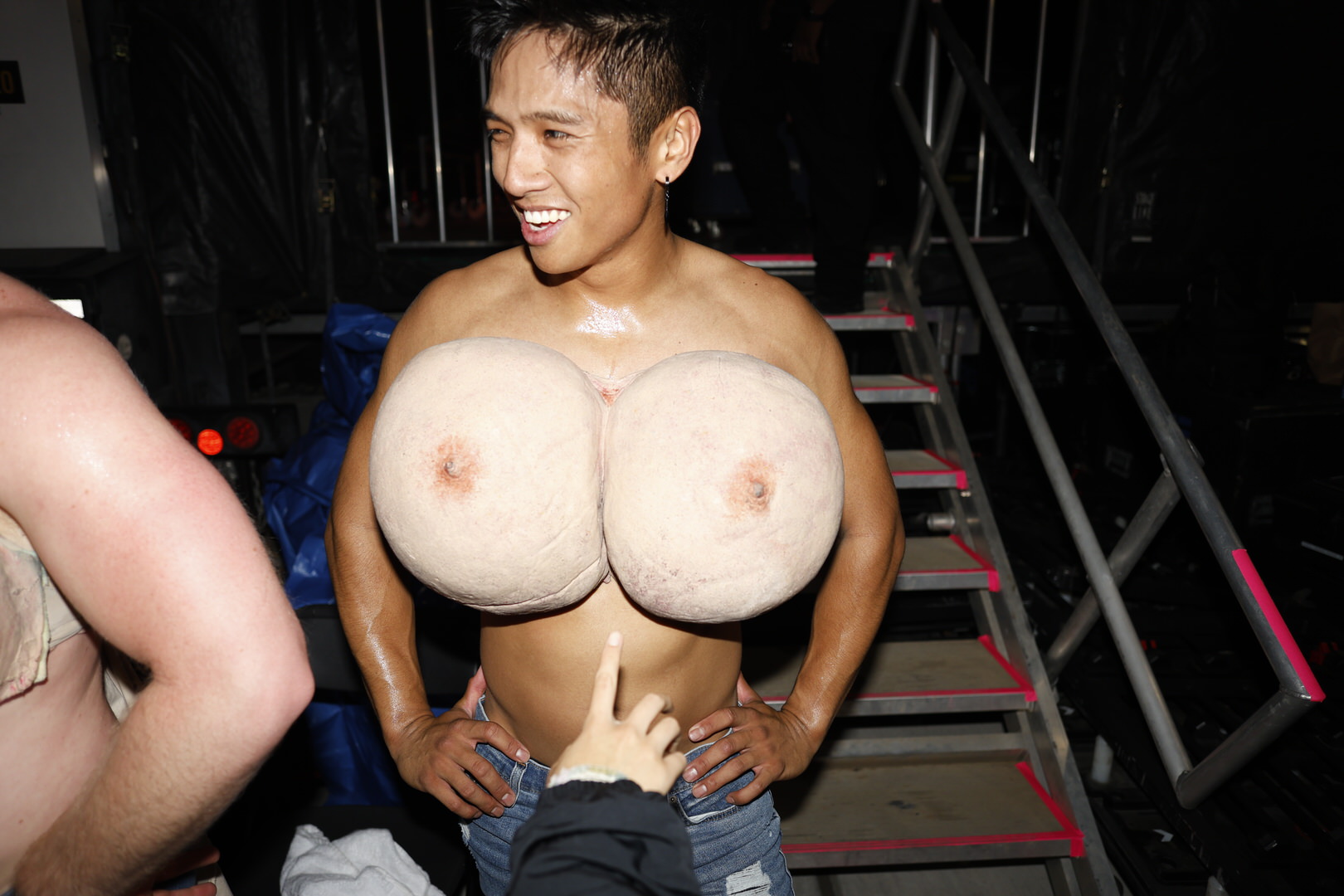
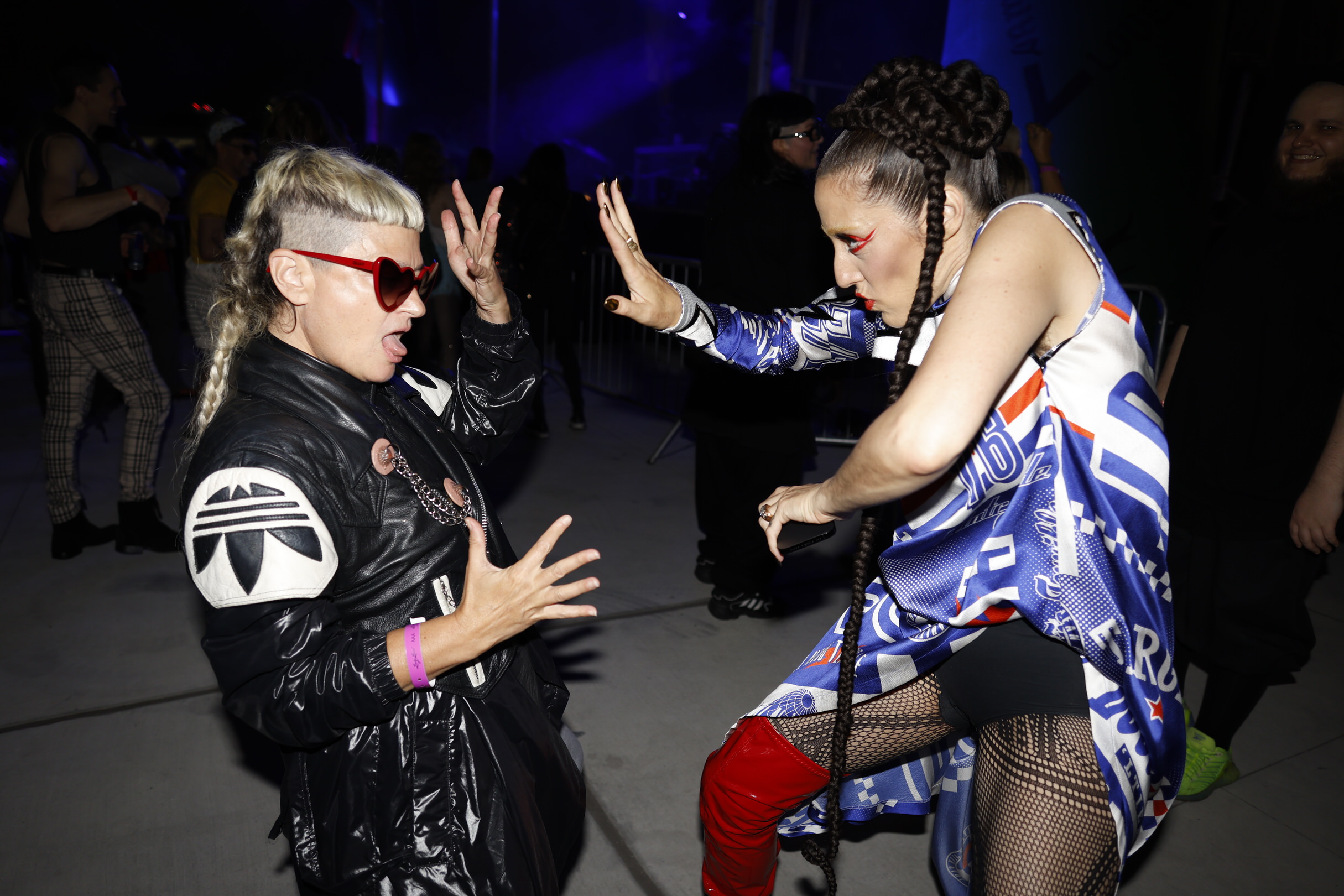
Are you noticing any differences between the reception and organizing of Ladyland number six versus its first iteration?
More money, more problems. More stage, more problems, more divas. Sometimes I wish I could go back to that first season — it seemed so much easier at the time. But the bigger you get, the more expectations people have — and rightfully so — whether it be the guests or the artists. It’s just up to our team to try to work harder to make sure that we live up to as many expectations as we can. The goal is that everyone is happy. Even though you can’t please all of them — especially in a room full of thousands of gay people. Not to be homophobic during Pride—
I don’t think you’re being homophobic, I think you’re being honest.
We do our best to make sure that everyone can have the best Pride ever. The bigger it gets, the less fun I get to have. But I’m okay with that. And I’m really excited about it. It’s really big. And the gays deserve that. But I also think going to a small, dirty gay bar is an incredible thing. And you should support your local dirty, skanky gay bar.
If it’s not a fire hazard, I don’t want to be drinking there.
If you don’t feel like you’re going to die at least ten dimes during Pride weekend, did you really celebrate Pride?
If you don’t have to remind yourself to get a tetanus shot after Pride, you didn’t go hard enough.
It’s really amazing to be able to offer the city something this big and exciting — not to make myself sound like Mother Teresa. If anything, I’m trying to create other spaces for other people to get to be bad girls. I want everyone to have a good time.
It’s really refreshing to have someone who very obviously cares about the people they’re making parties for. We have so many random corporate Pride events that work to just get everyone’s pictures in front of their rainbow logo only to kick them out after.
We don’t have that many rainbows at our festival. I mean, you’re welcome to bring your rainbows. We love rainbows. But that’s not really the vibe. Alongside “An army of lovers will never be defeated,” our other motto is “Fist and resist.” So, we want everyone to be cautious and careful, but constantly fisting and resisting. A little less rainbow flag-friendly.
A little less cops-with-rainbow-batons friendly.
It’s just less family-friendly, except my baby comes to it in earplugs at some point. I’ve walked through soundchecks breastfeeding — making it a family event, but after that, we just keep the baby at home.
It takes a good nurturing instinct to be a good event planner — wrangling all these people together.
There’s definitely something maternal about it. A lot of my artists say to me, “Oh, mom is here making sure that you have water backstage,” so it’s mom vibes, but I’m a cool mom, I promise.
Mother — in every sense of the word.
I’m not a regular mom. I’m a cool mom.
